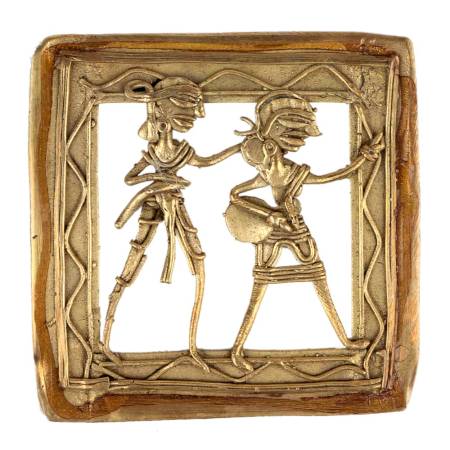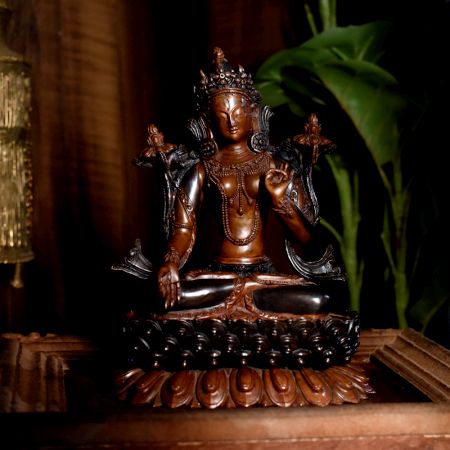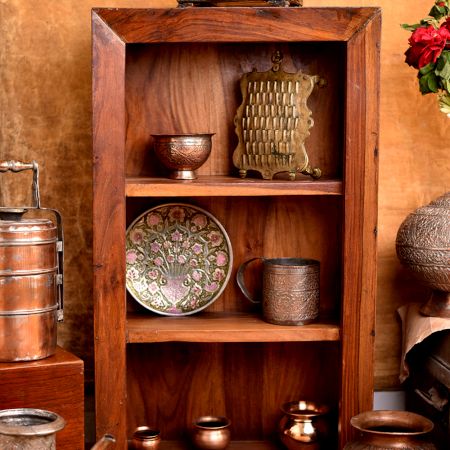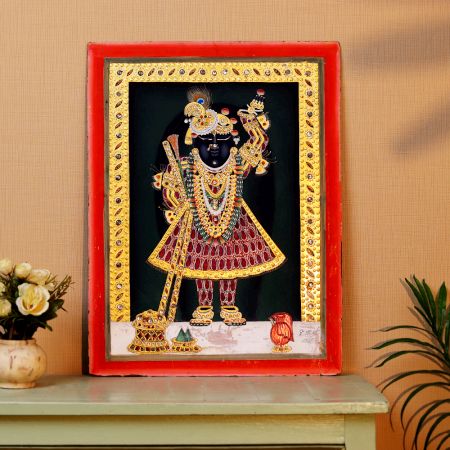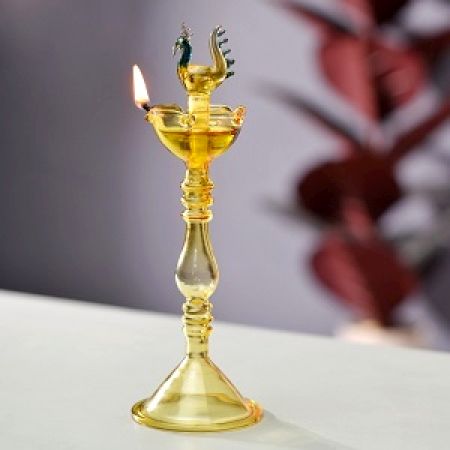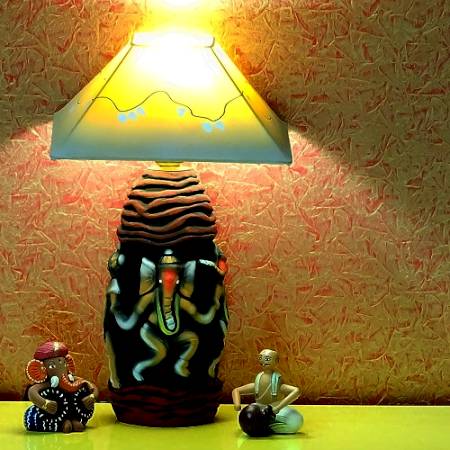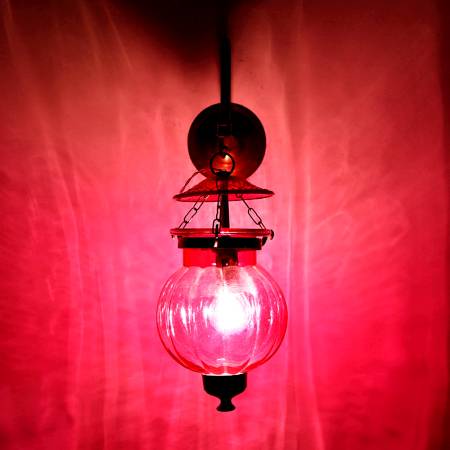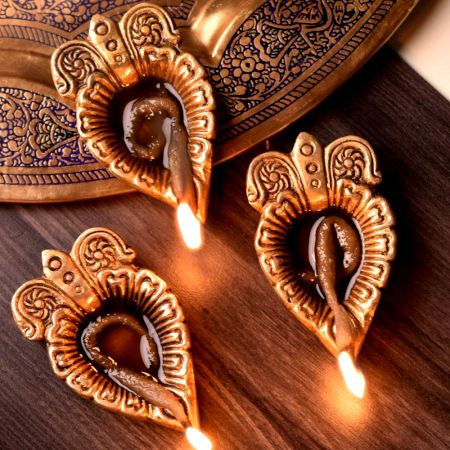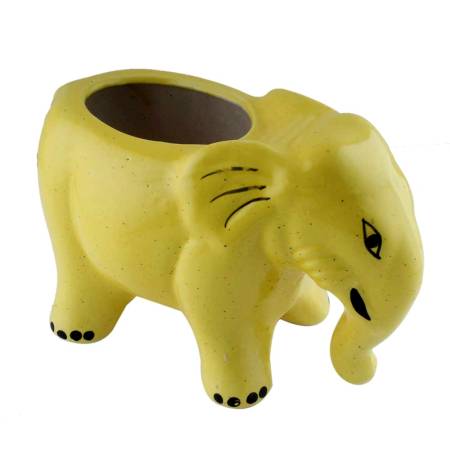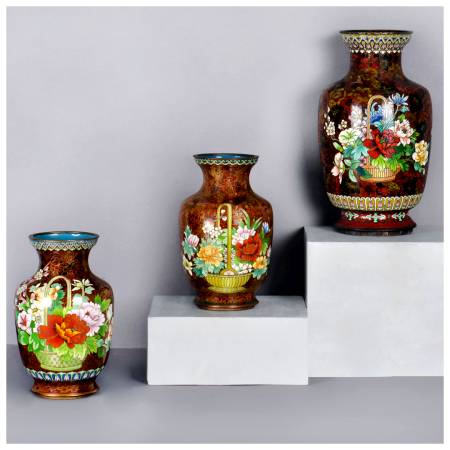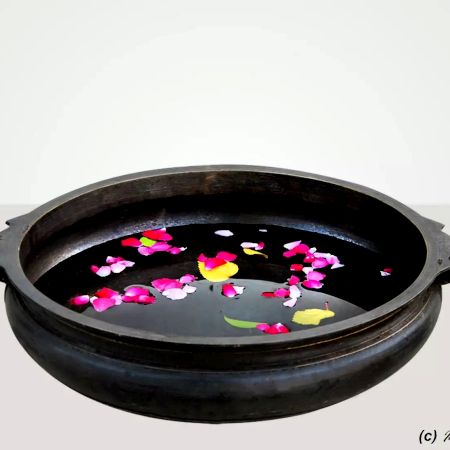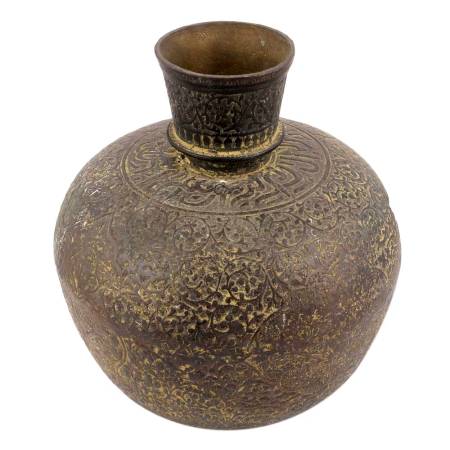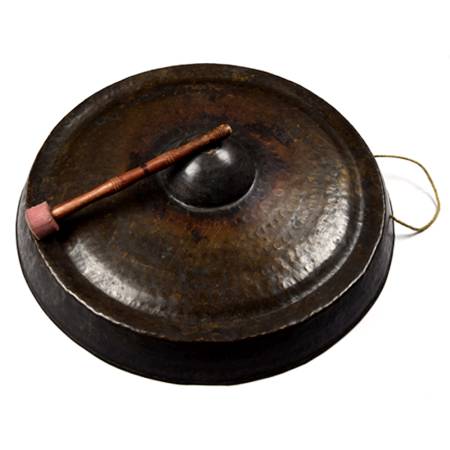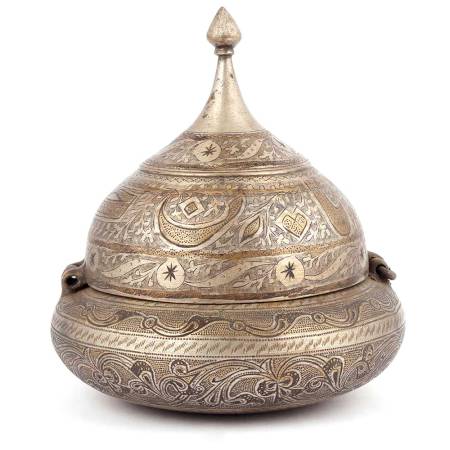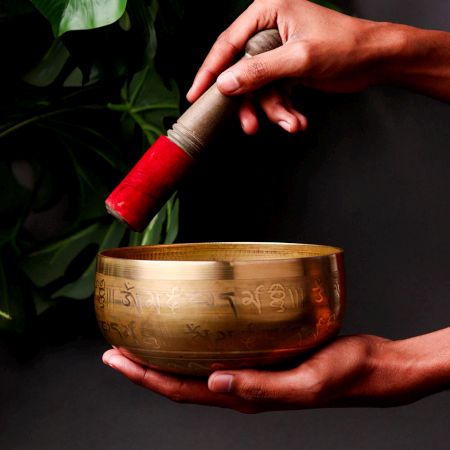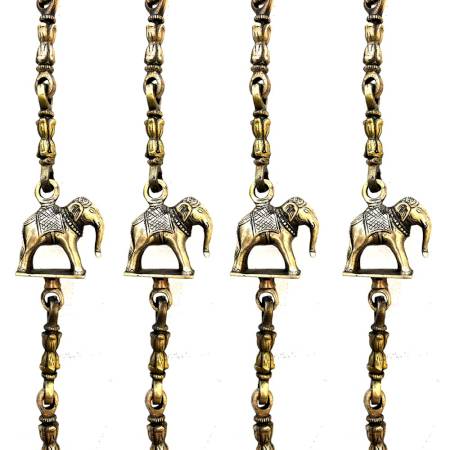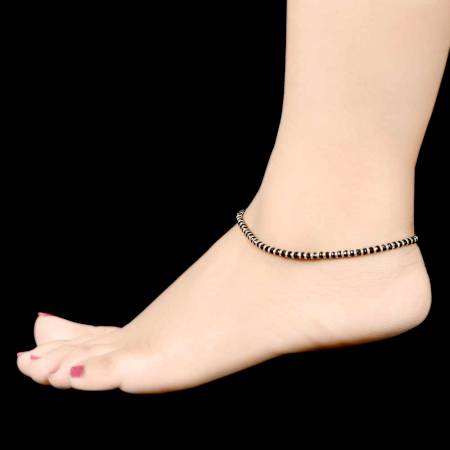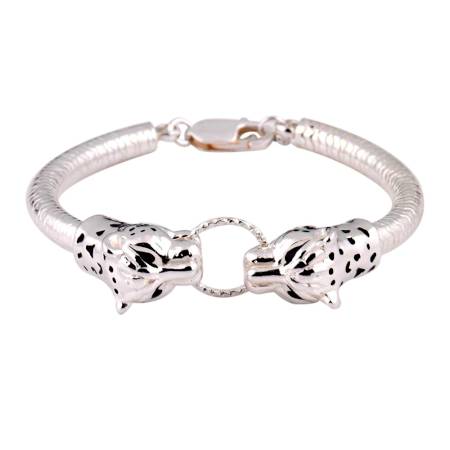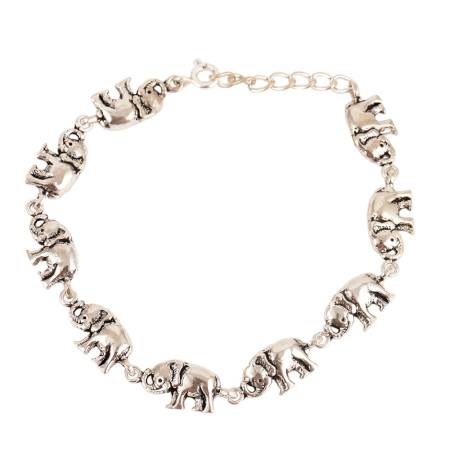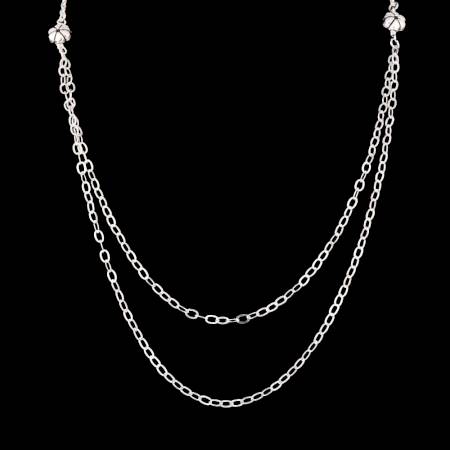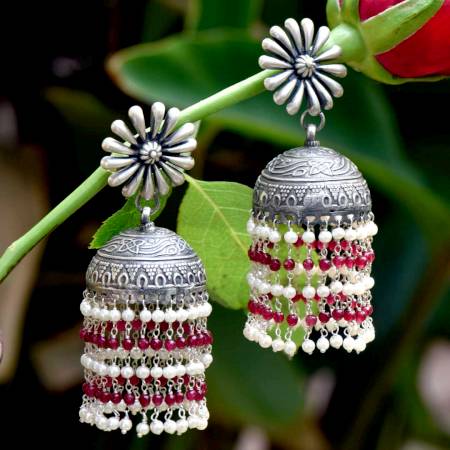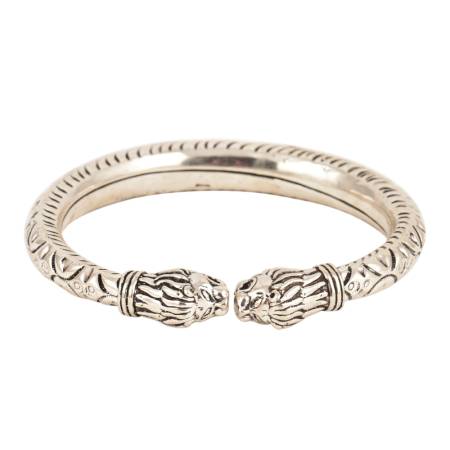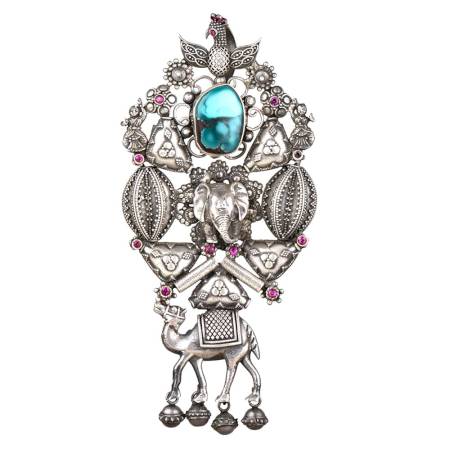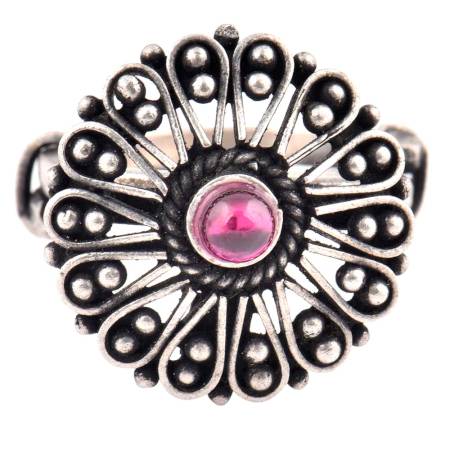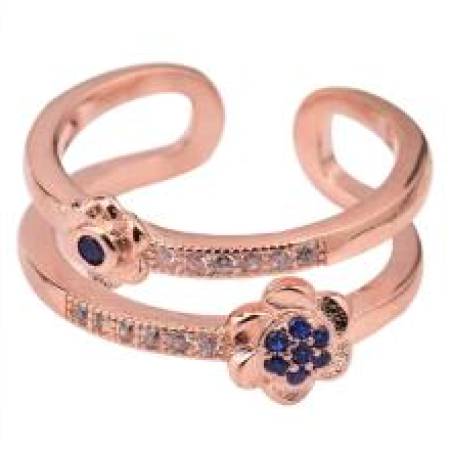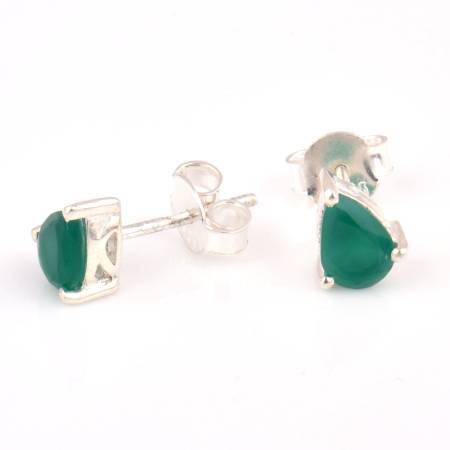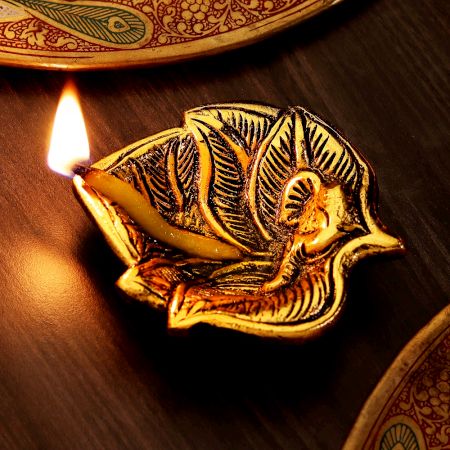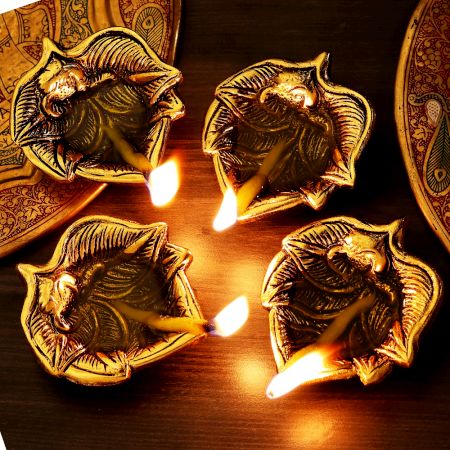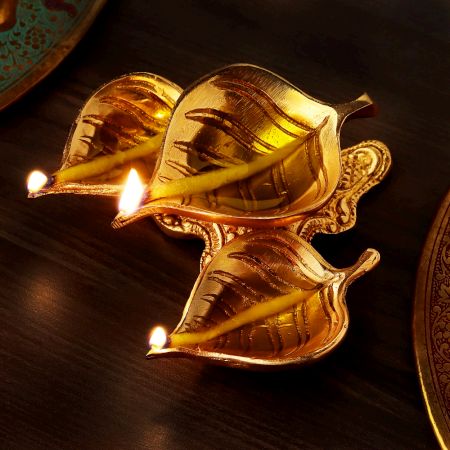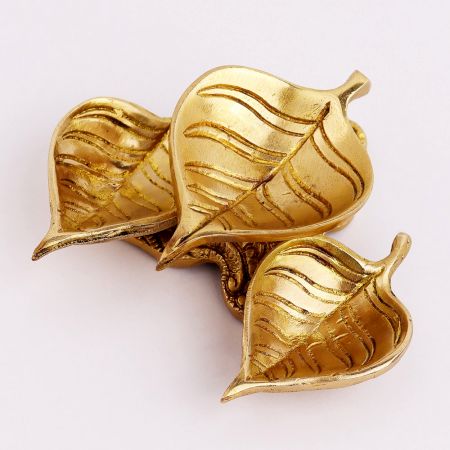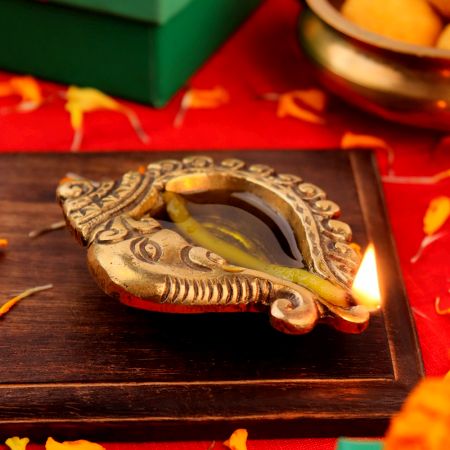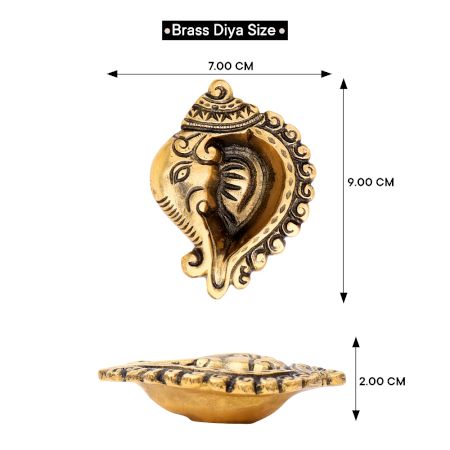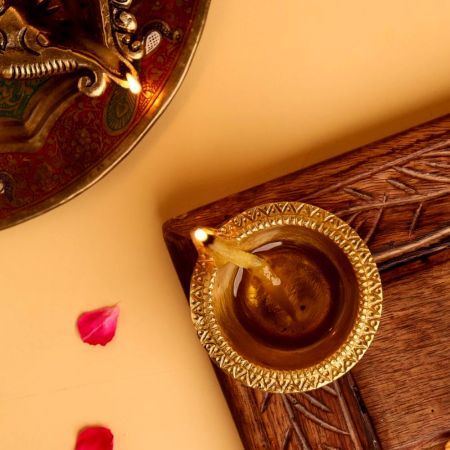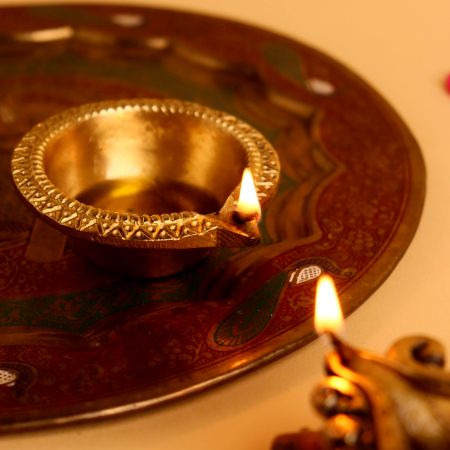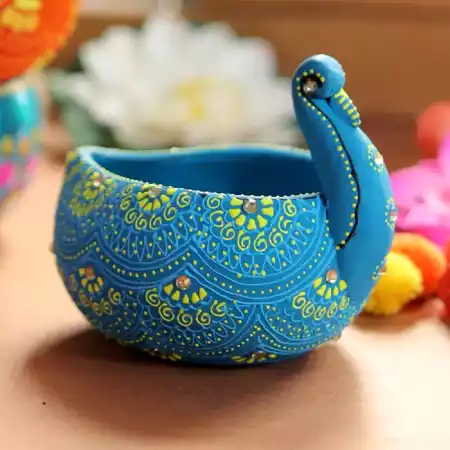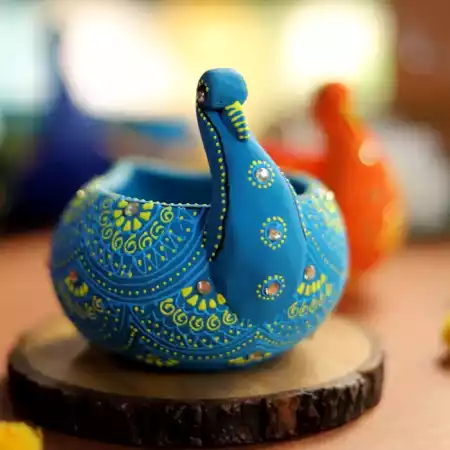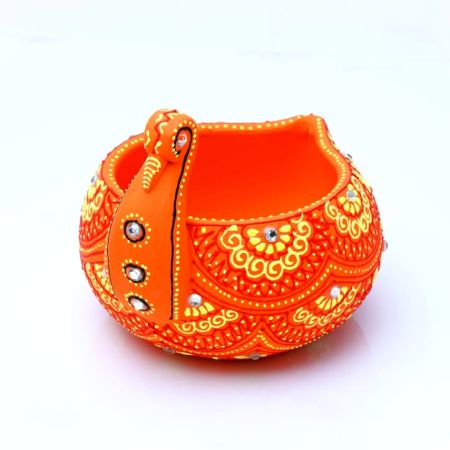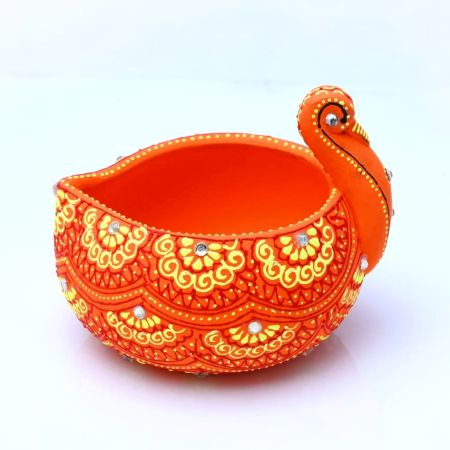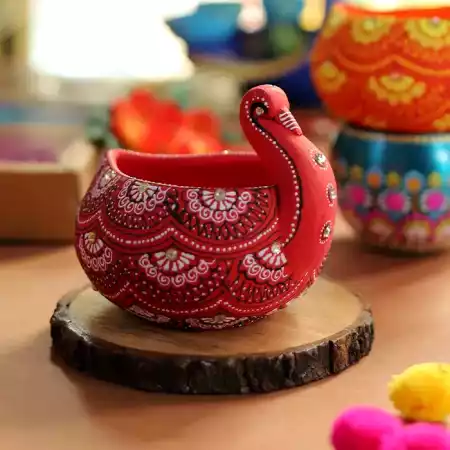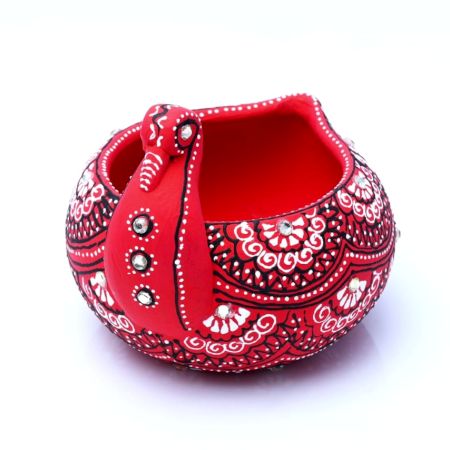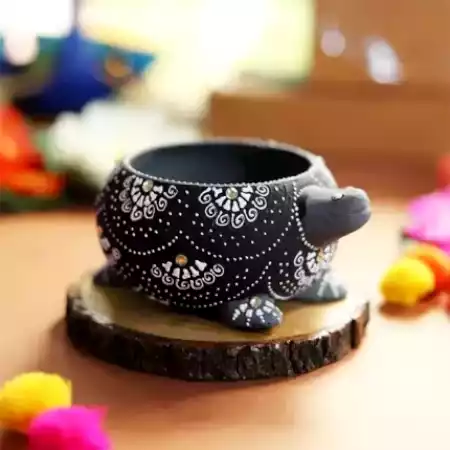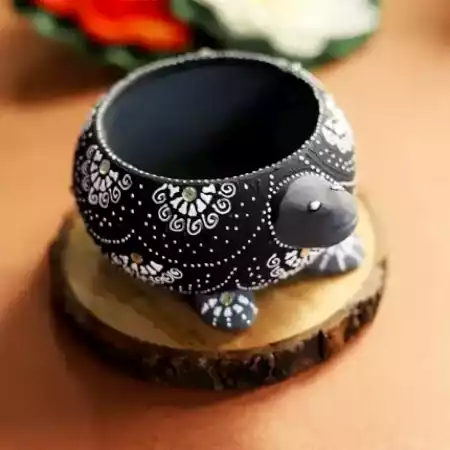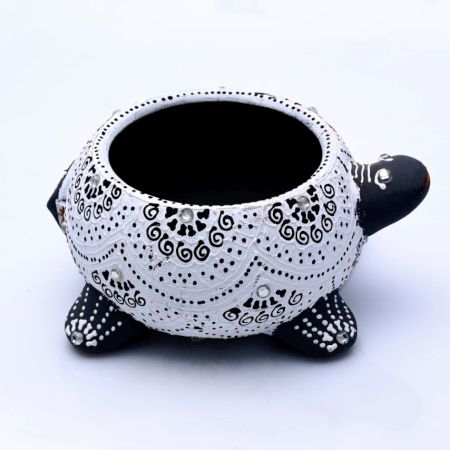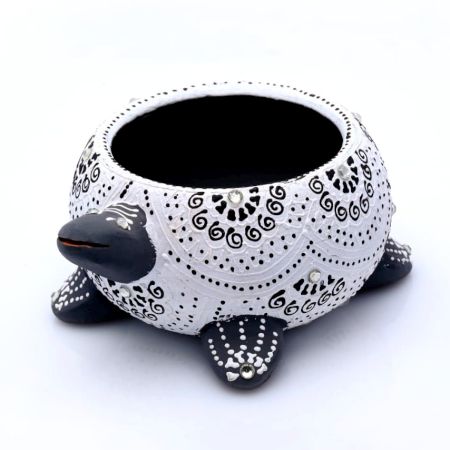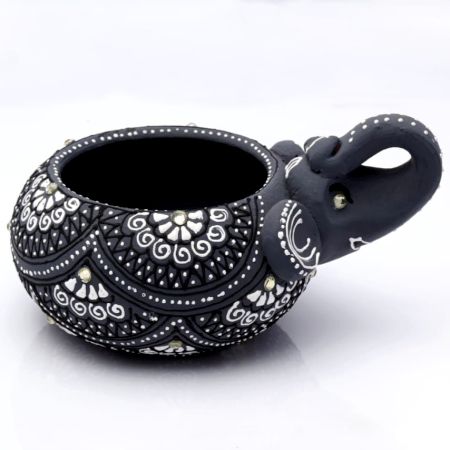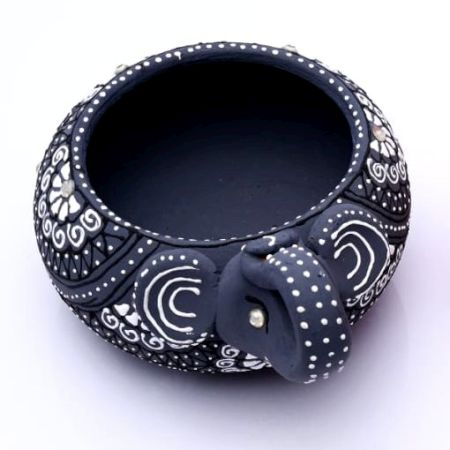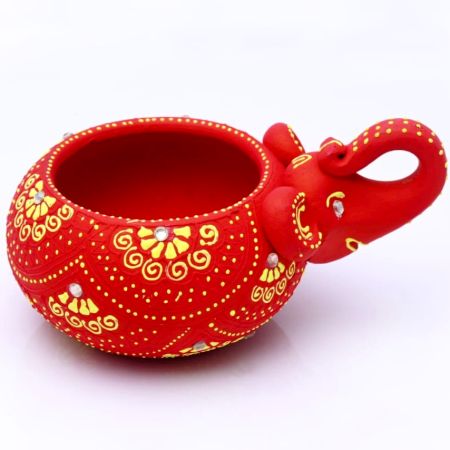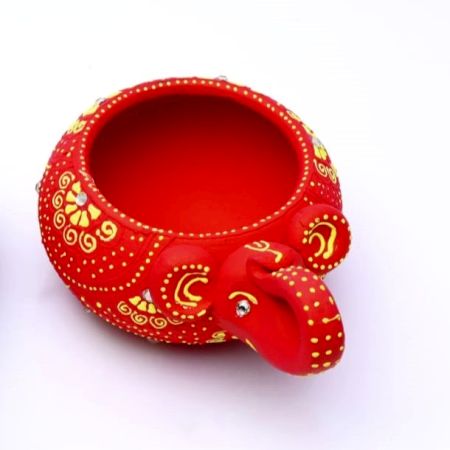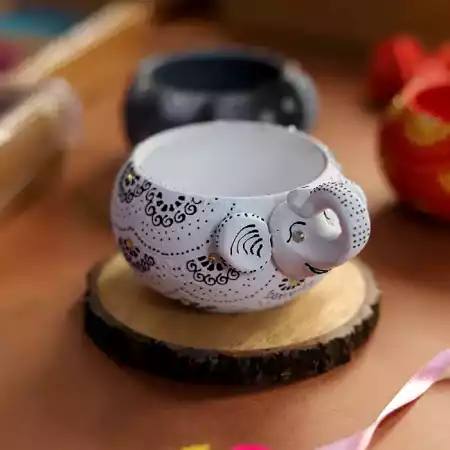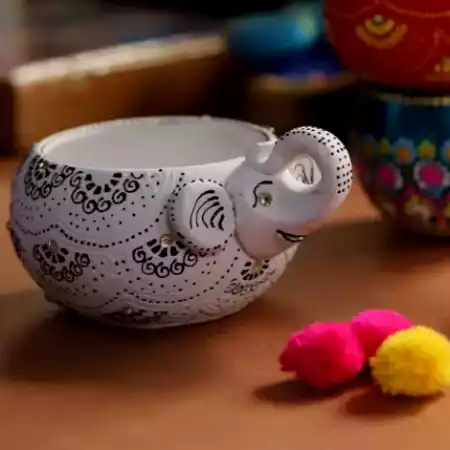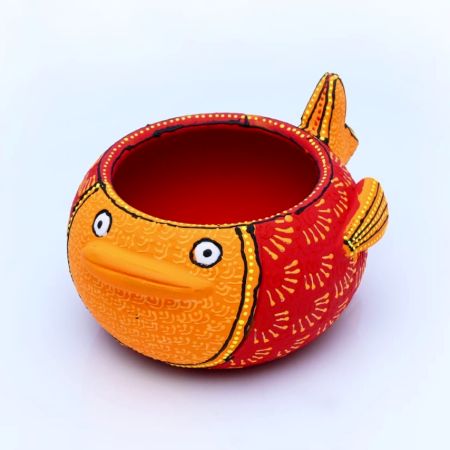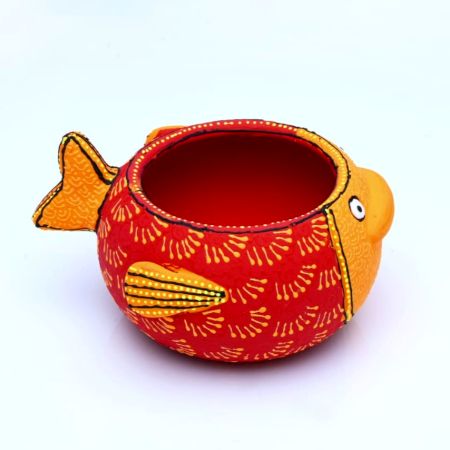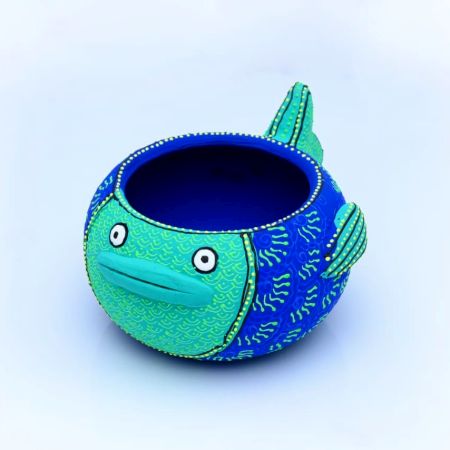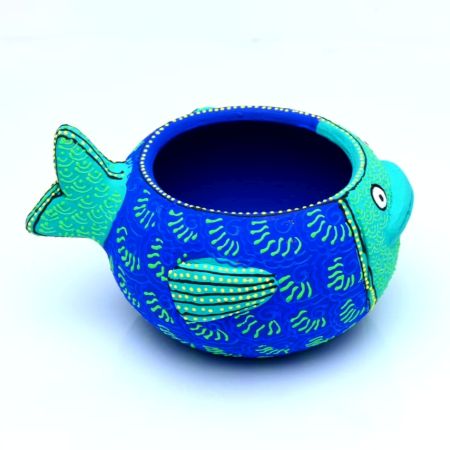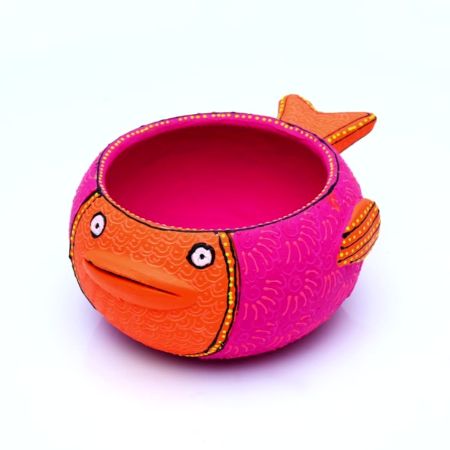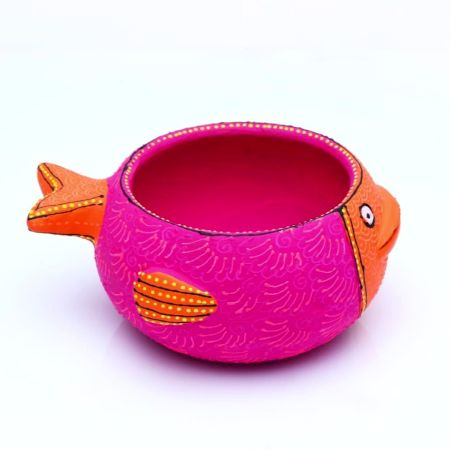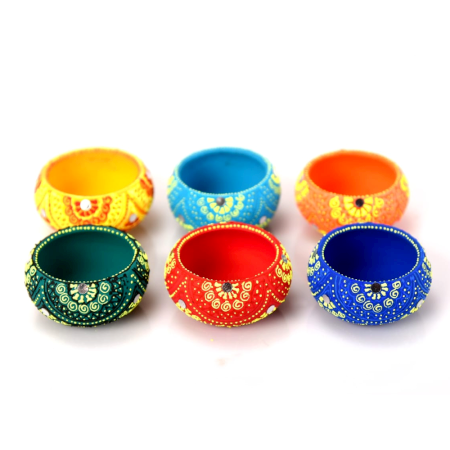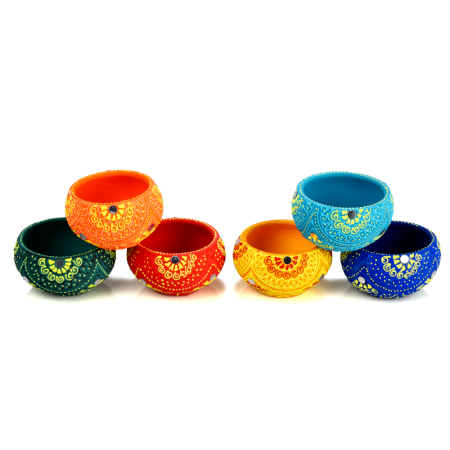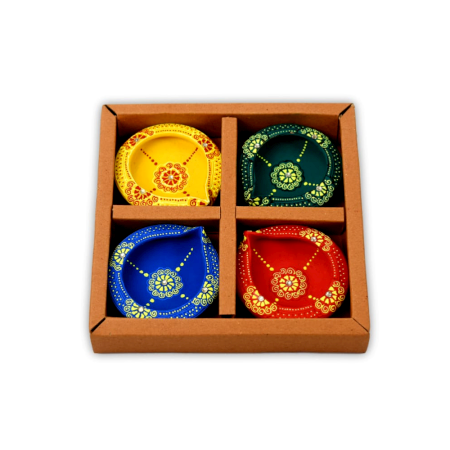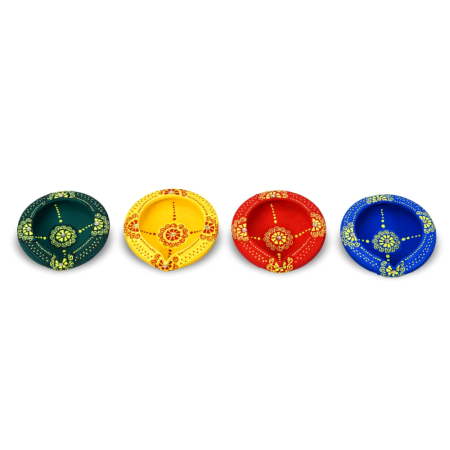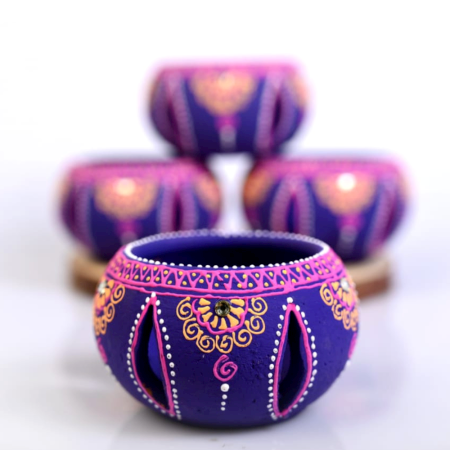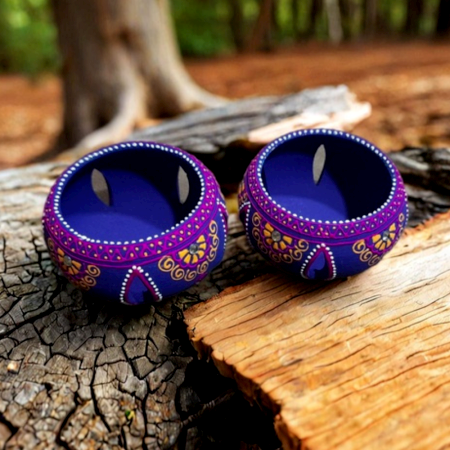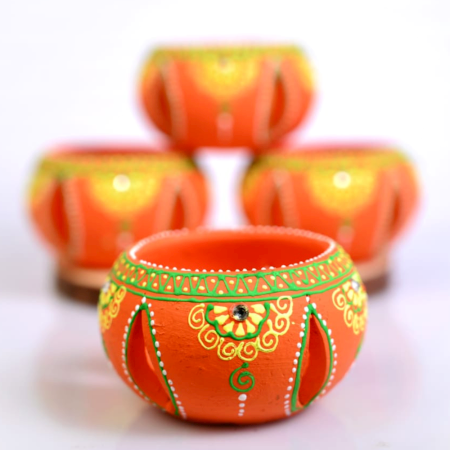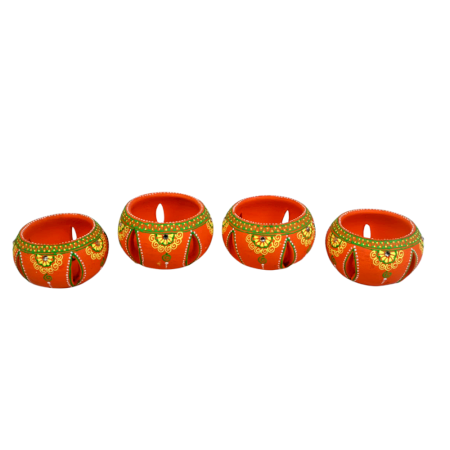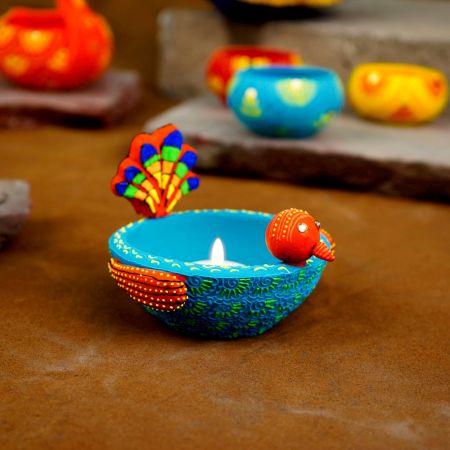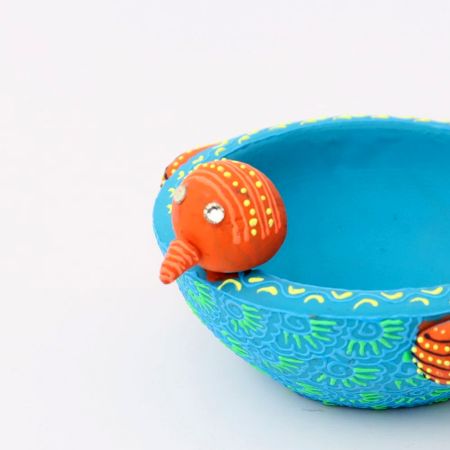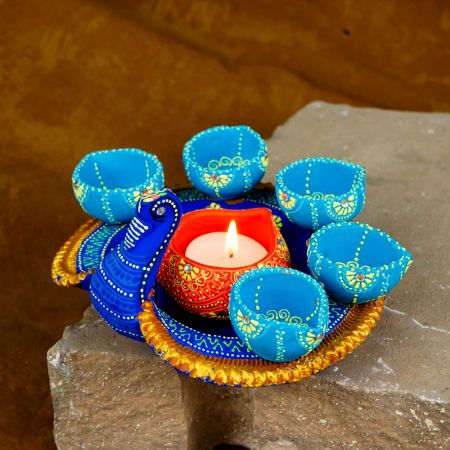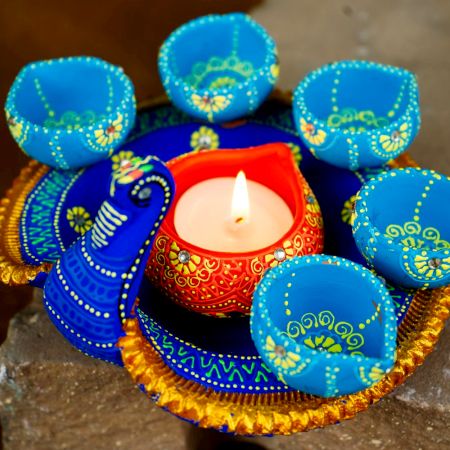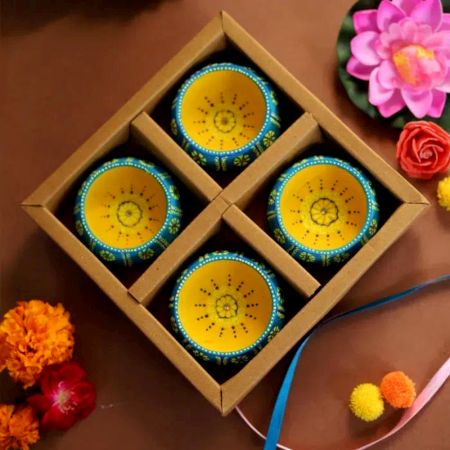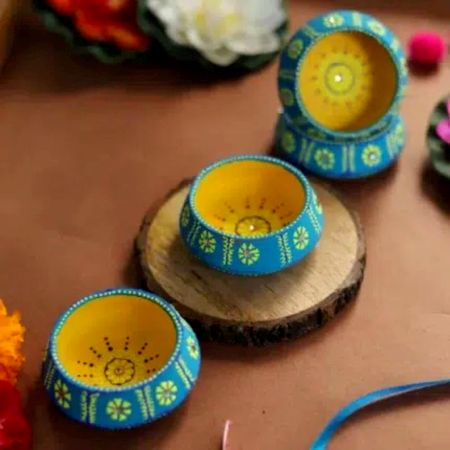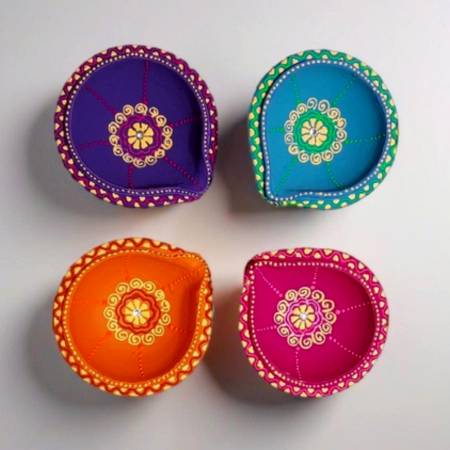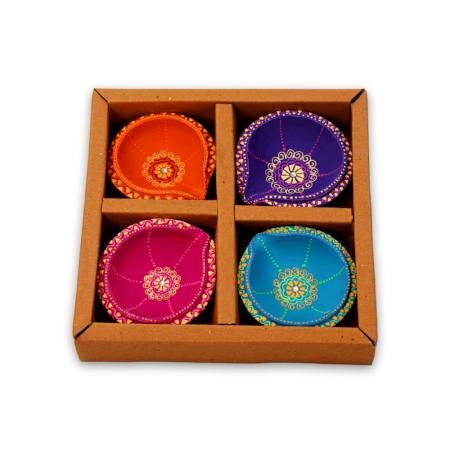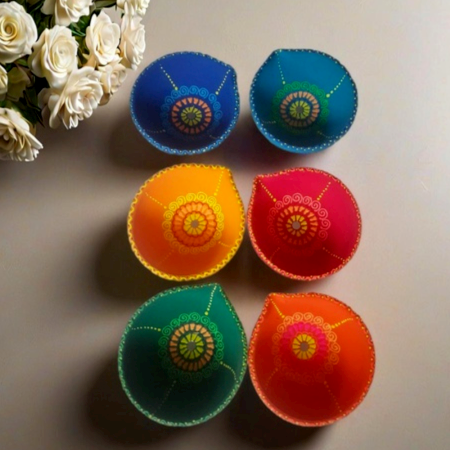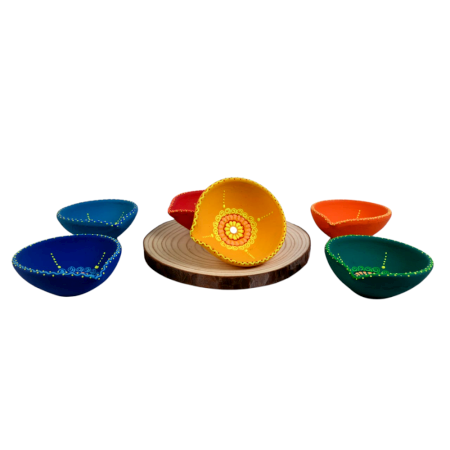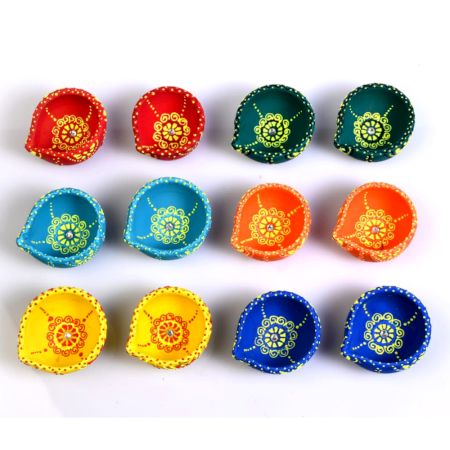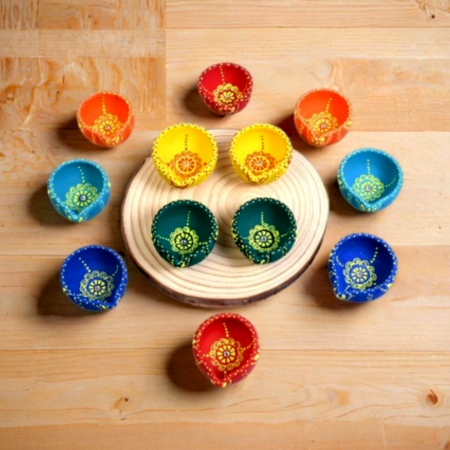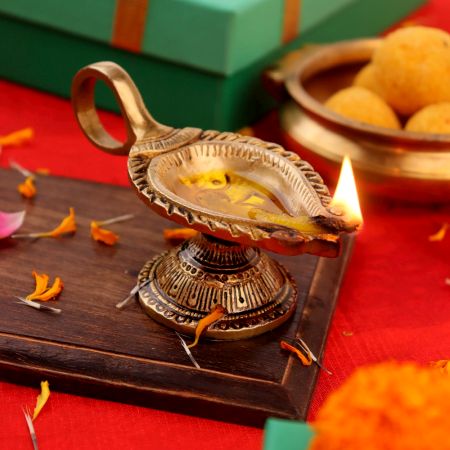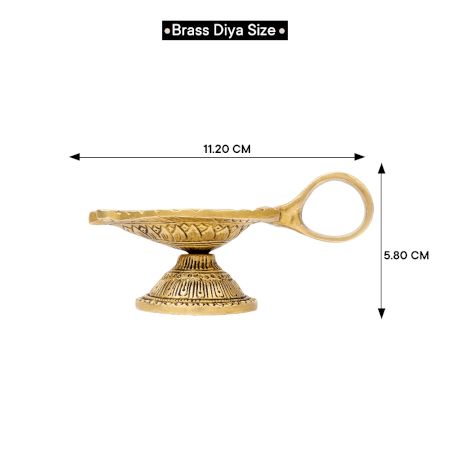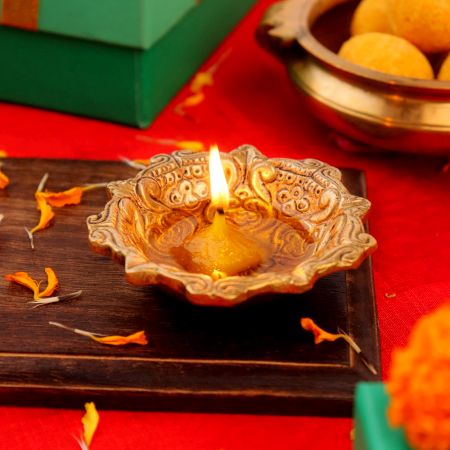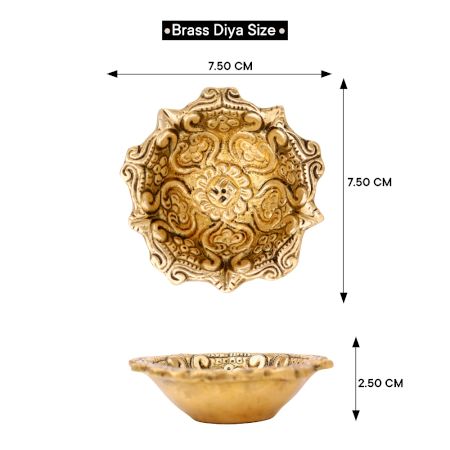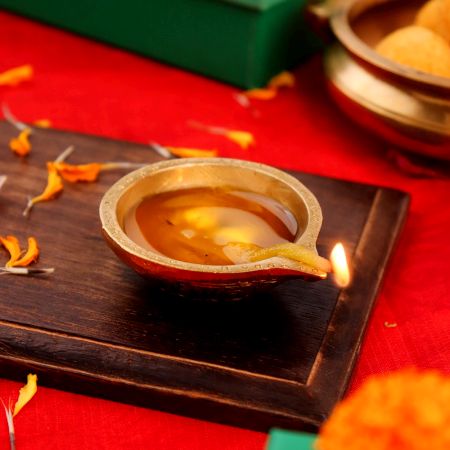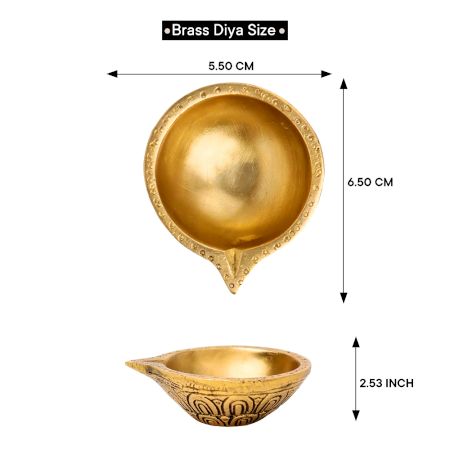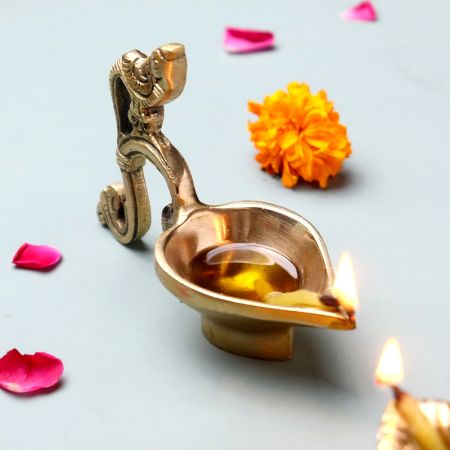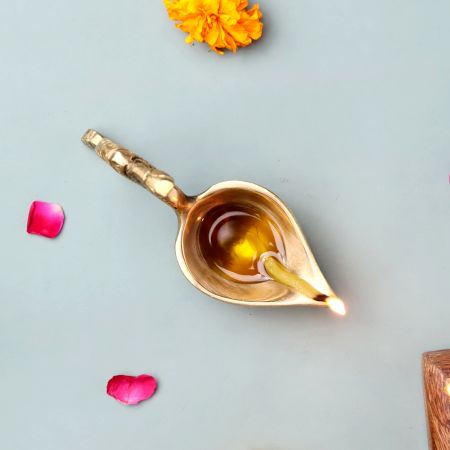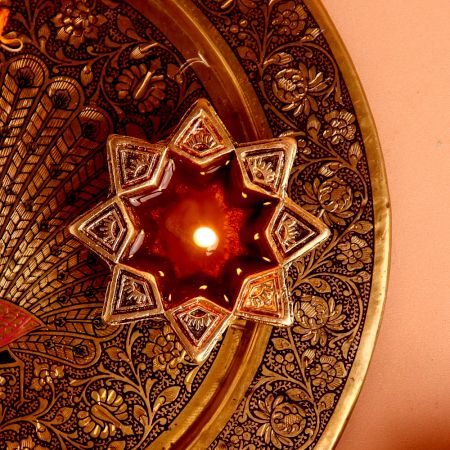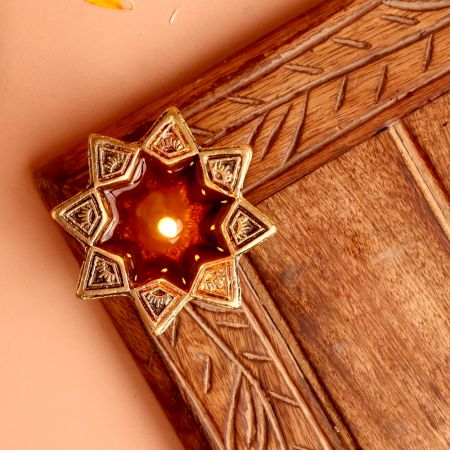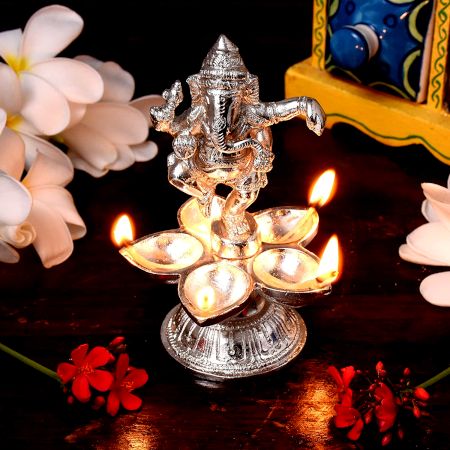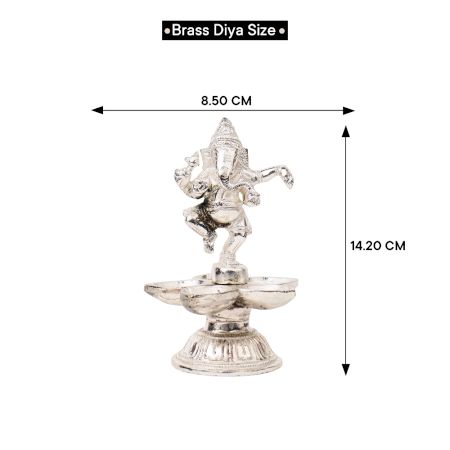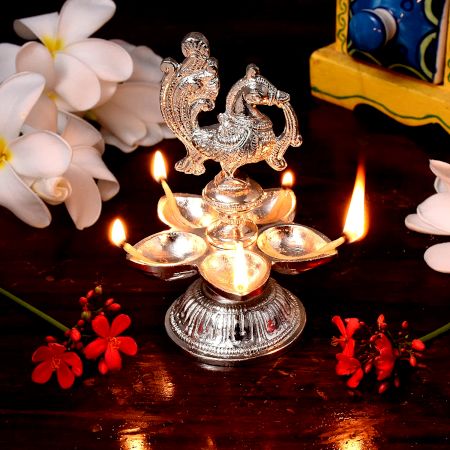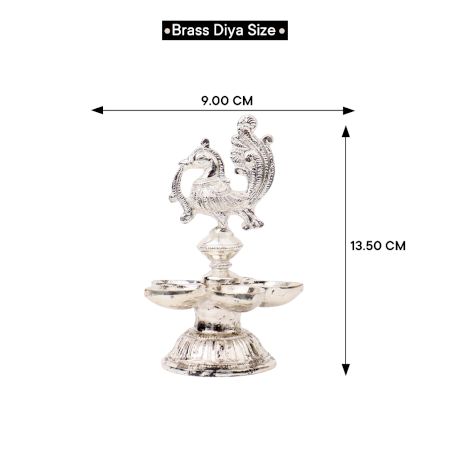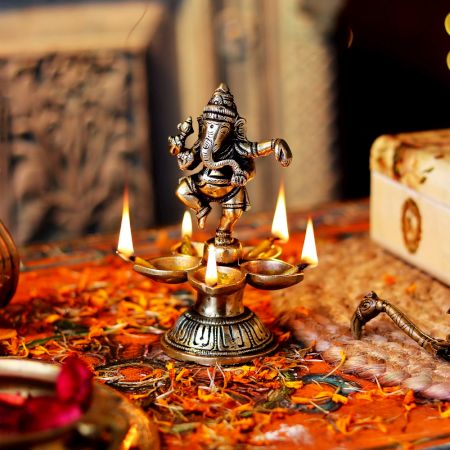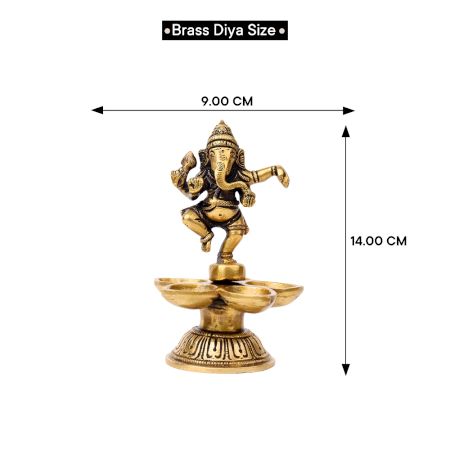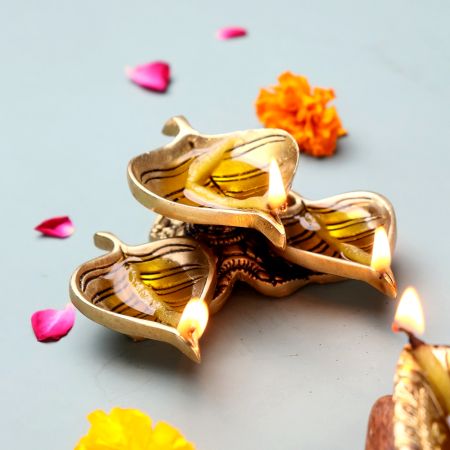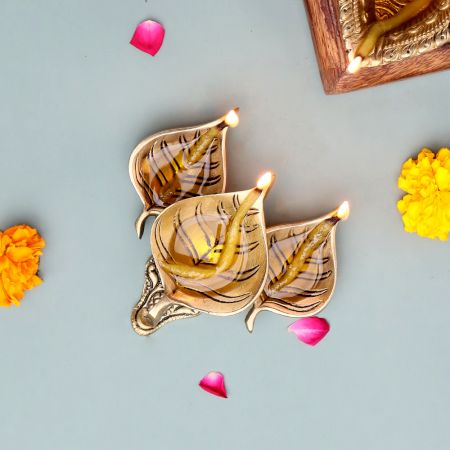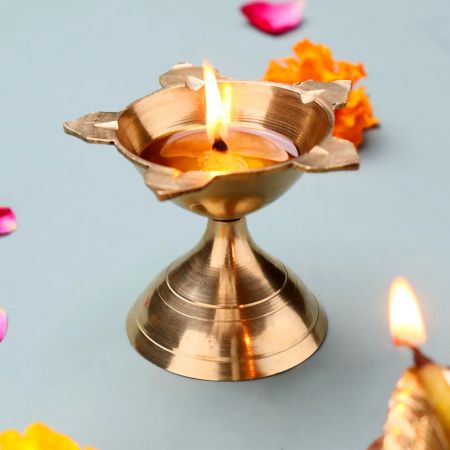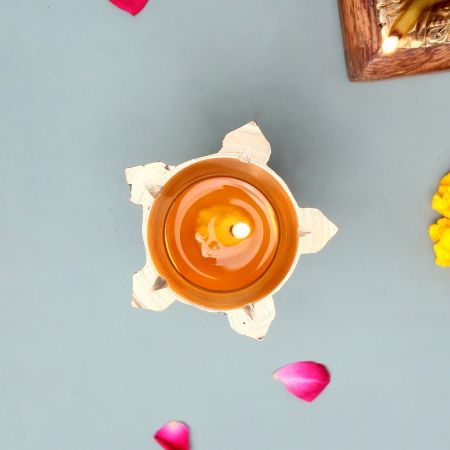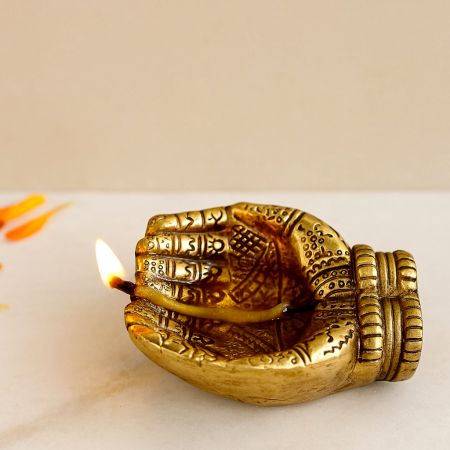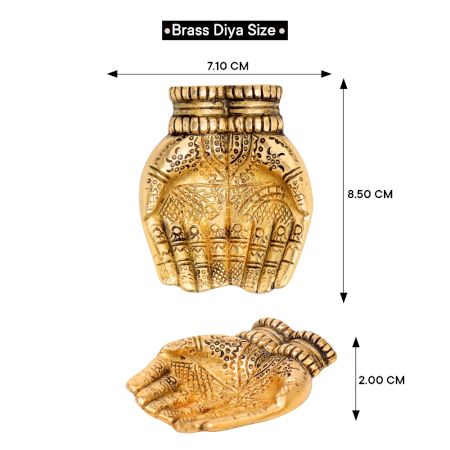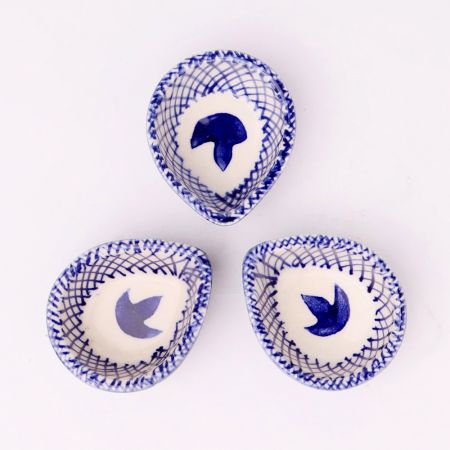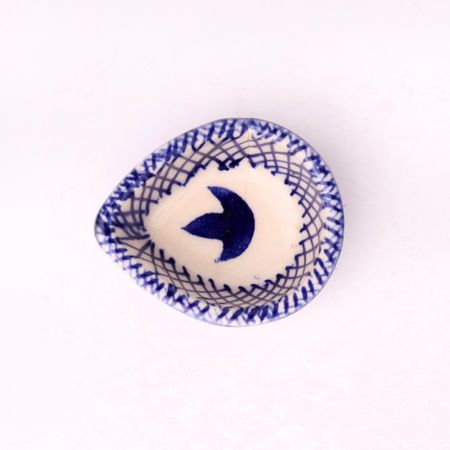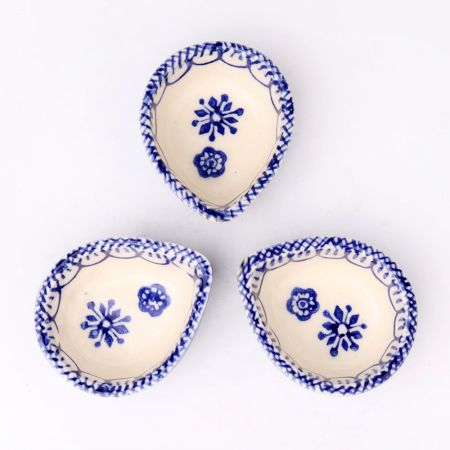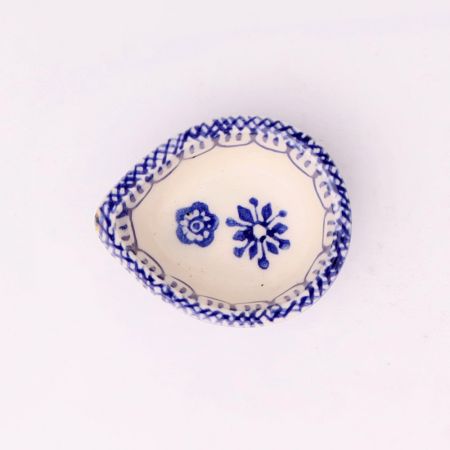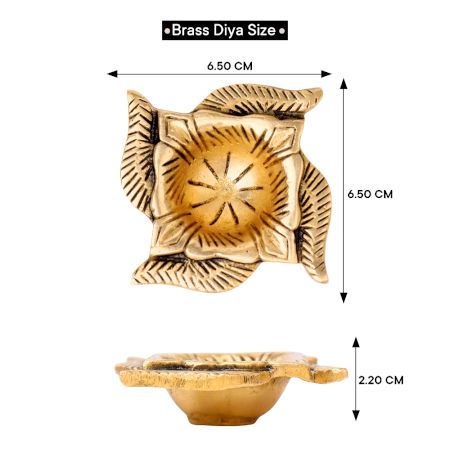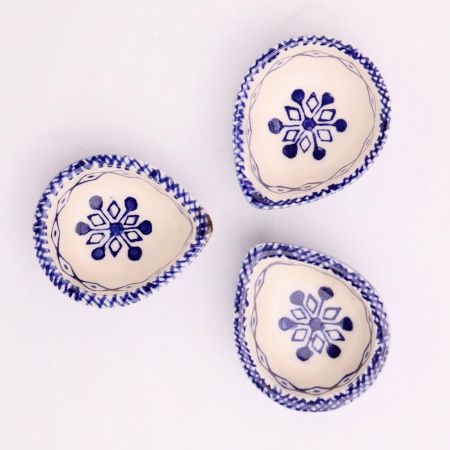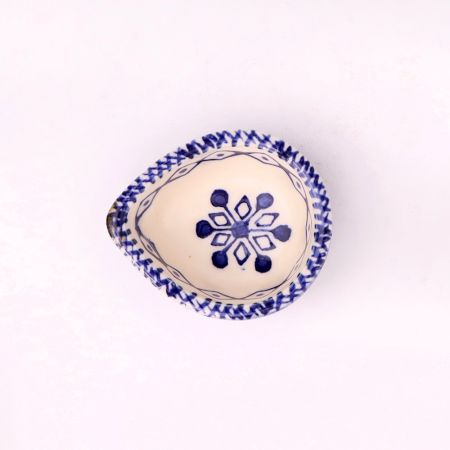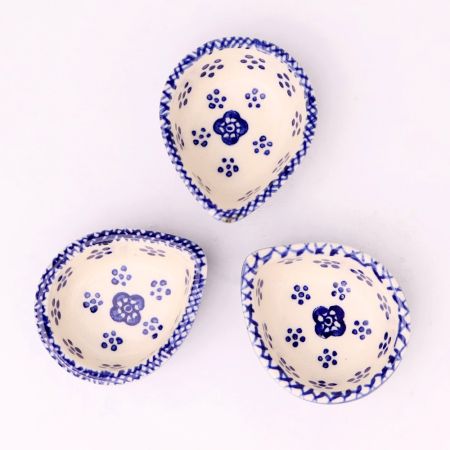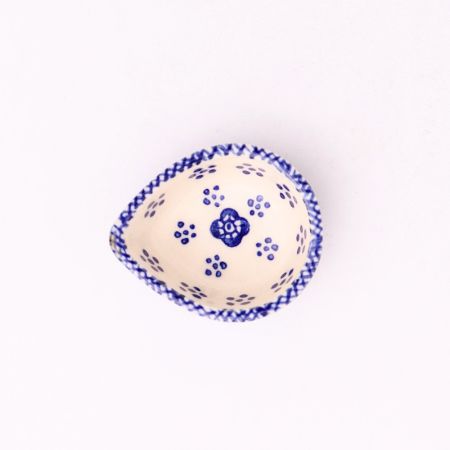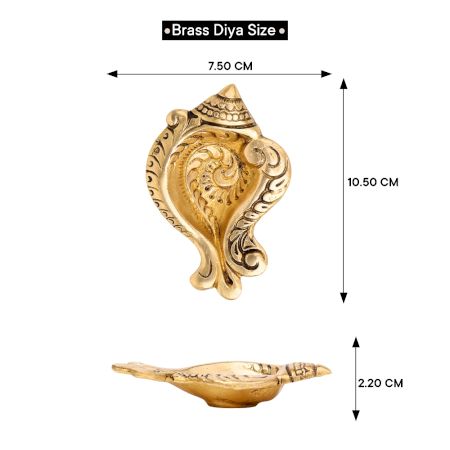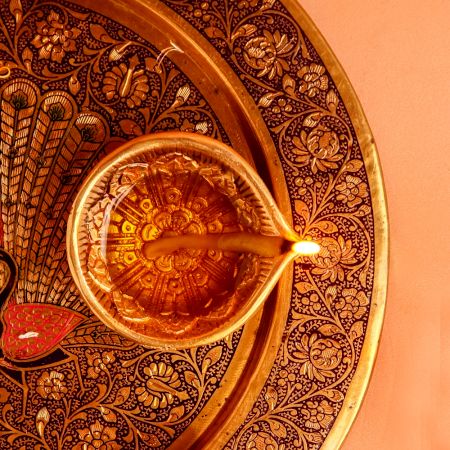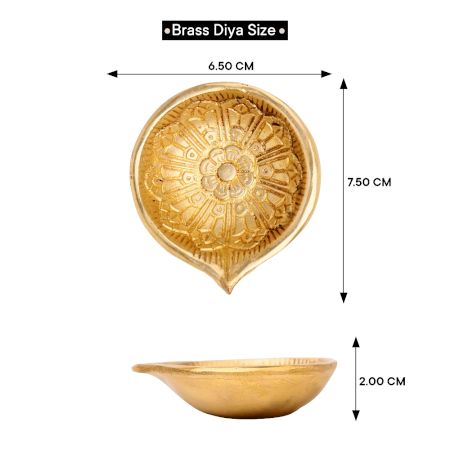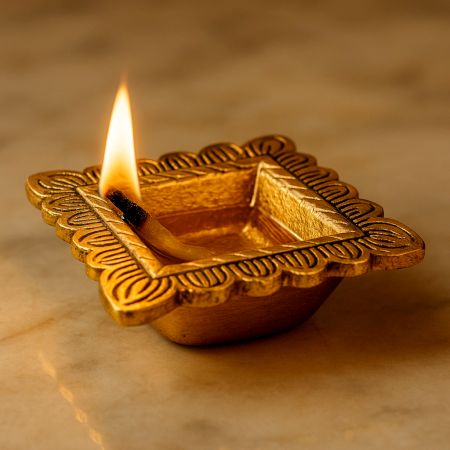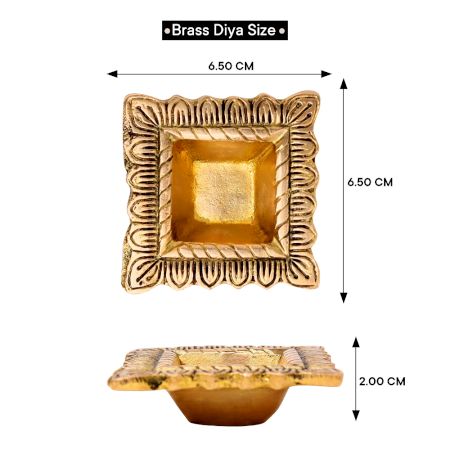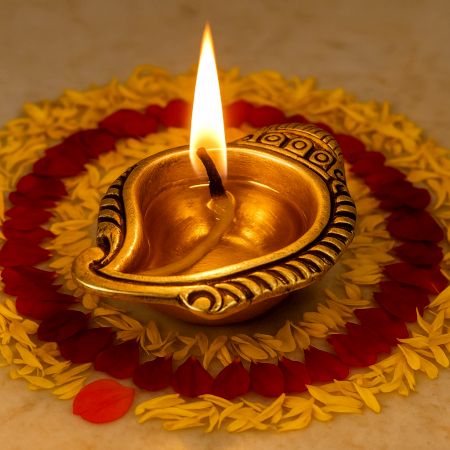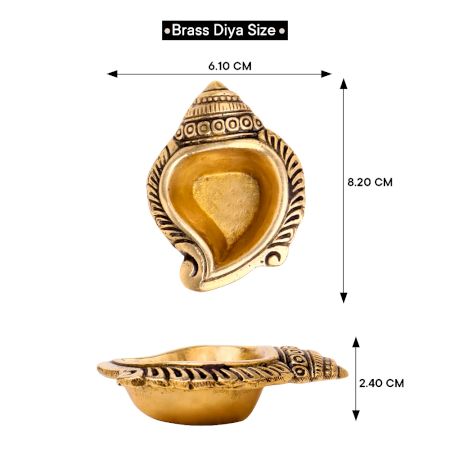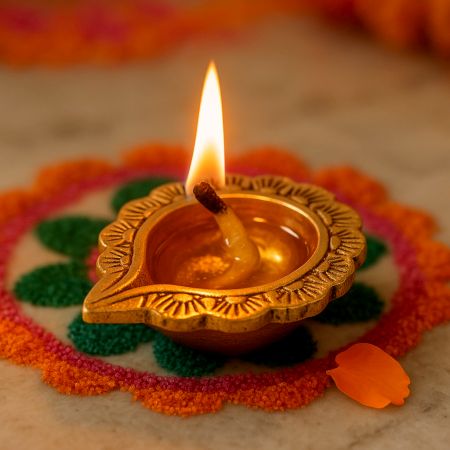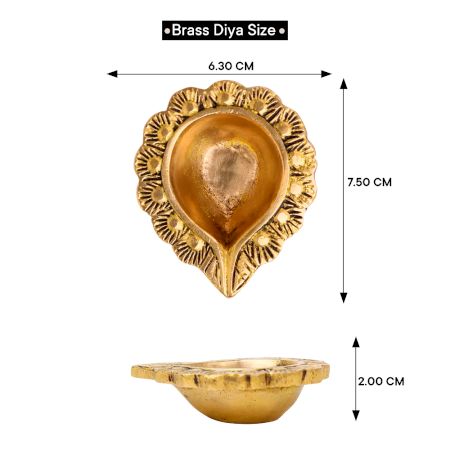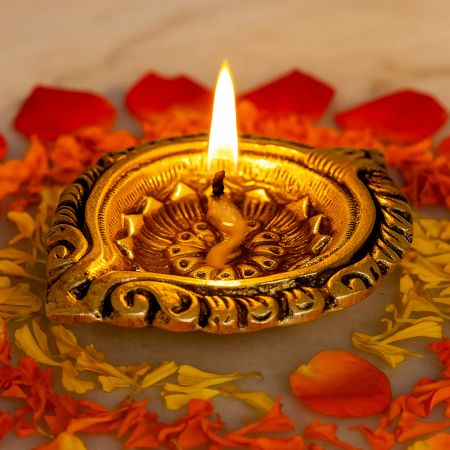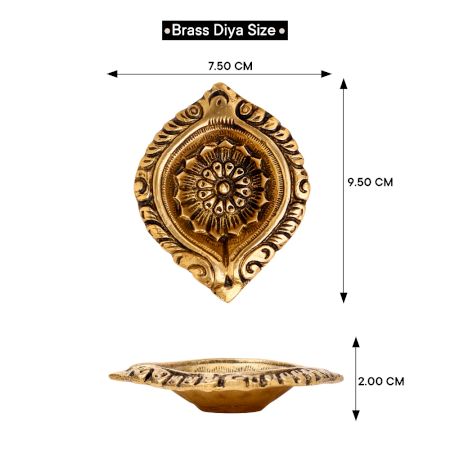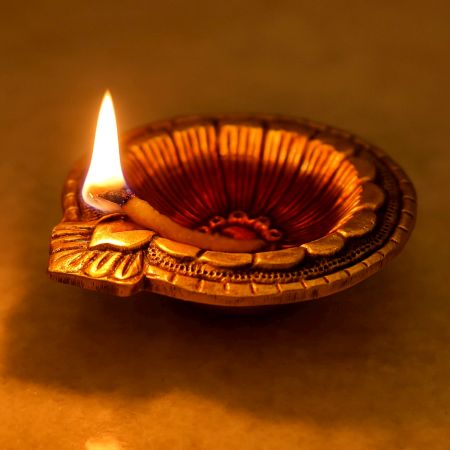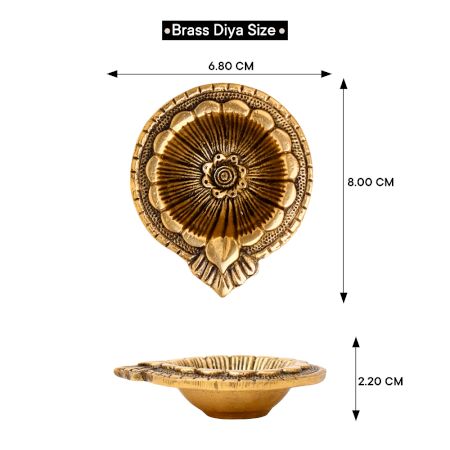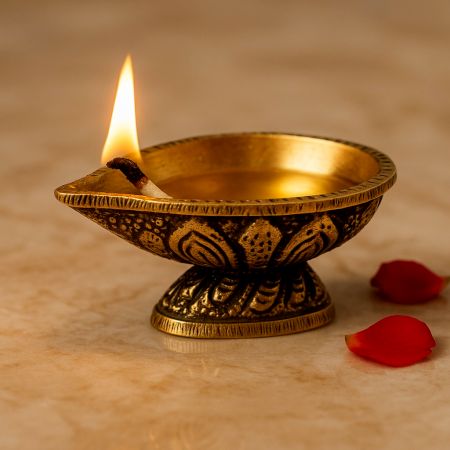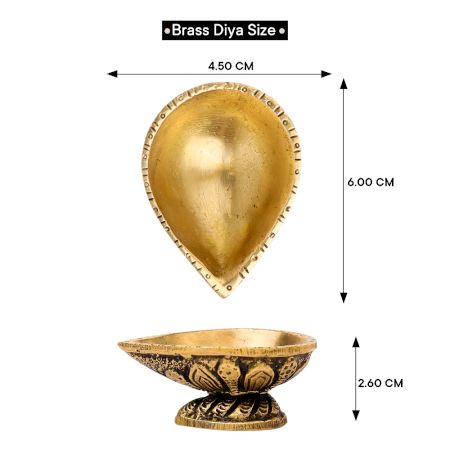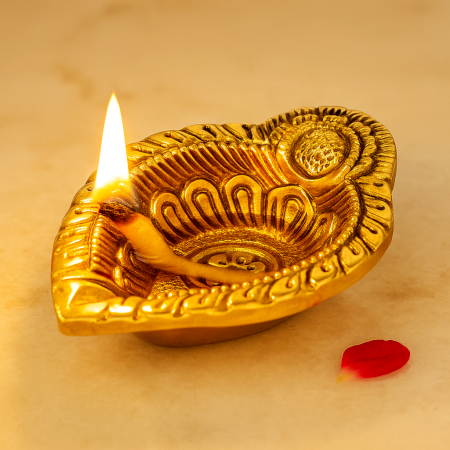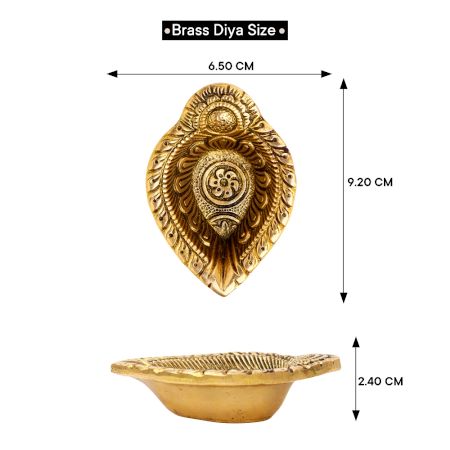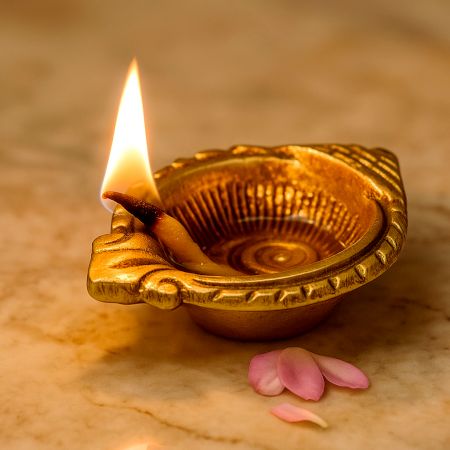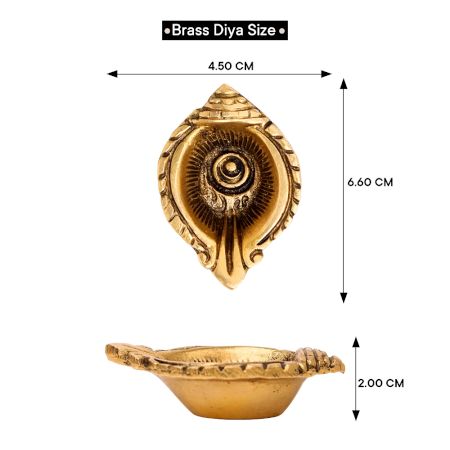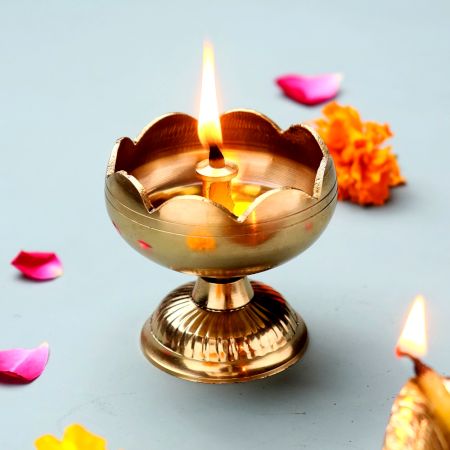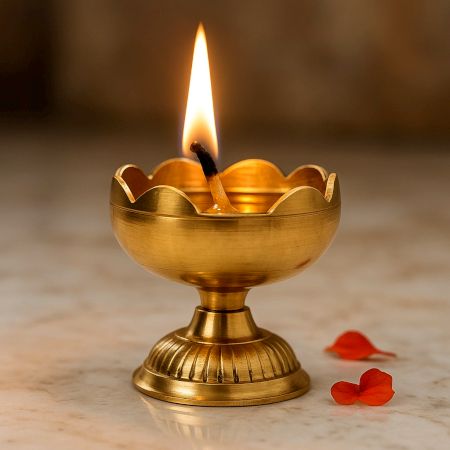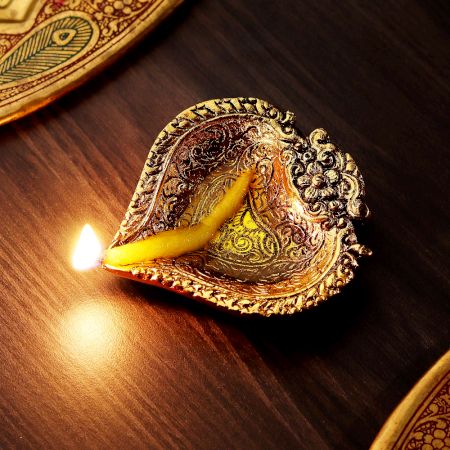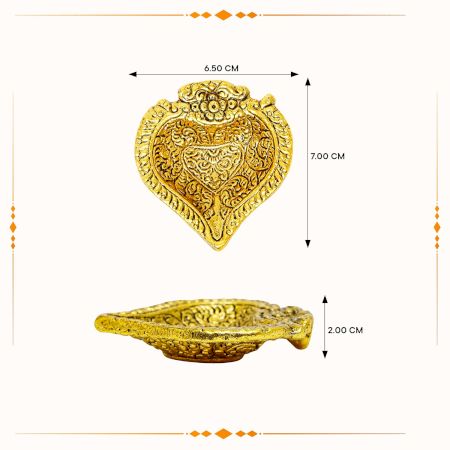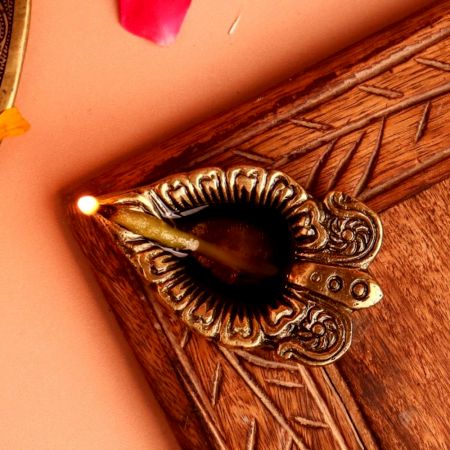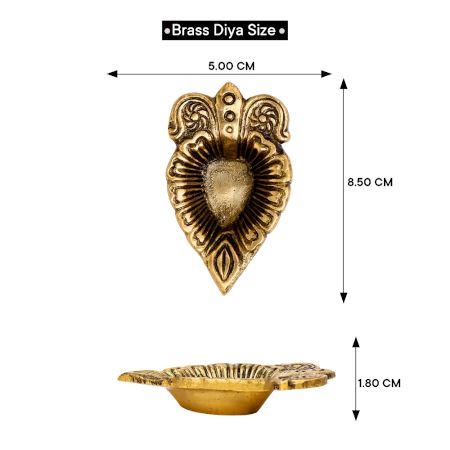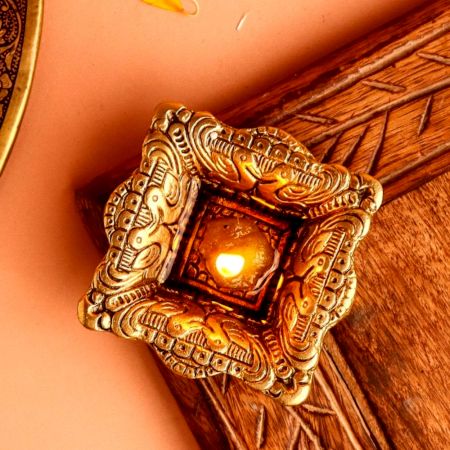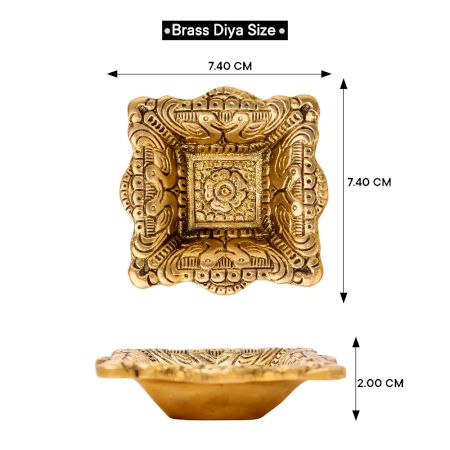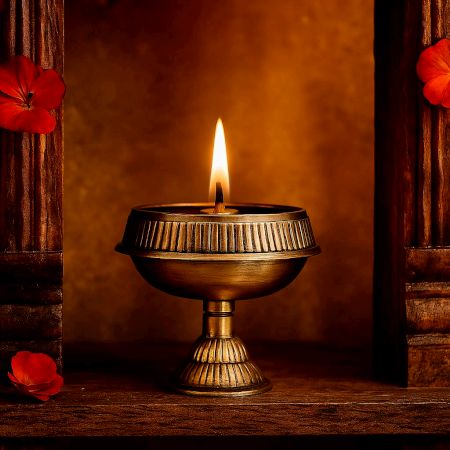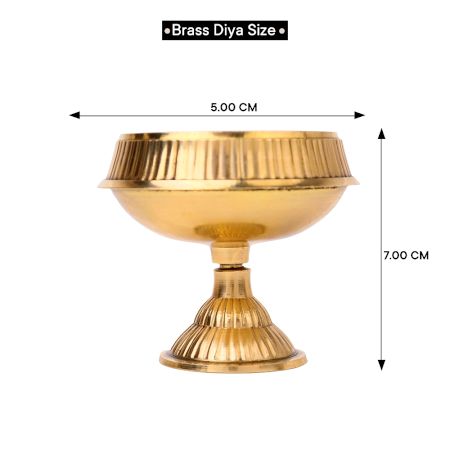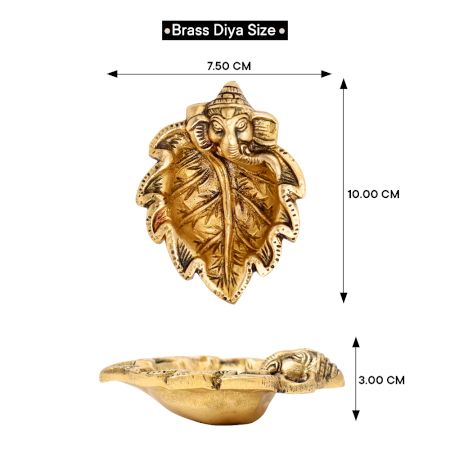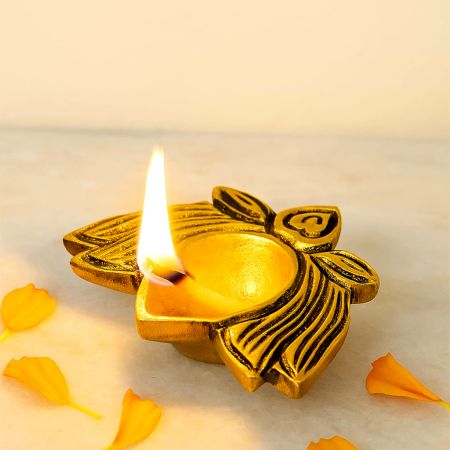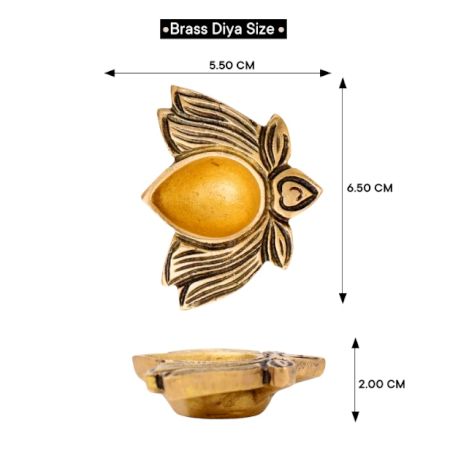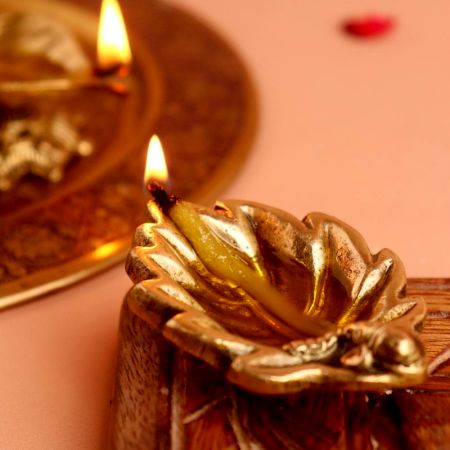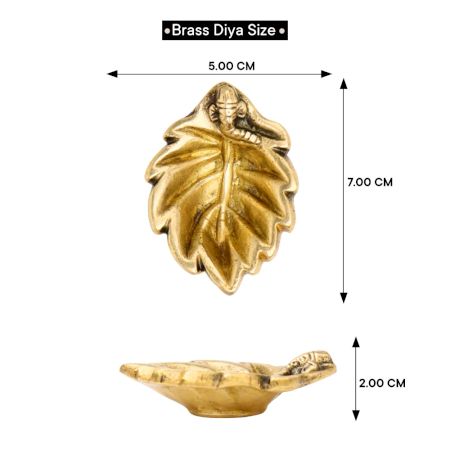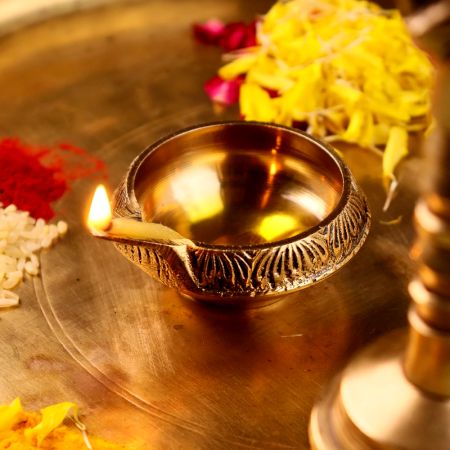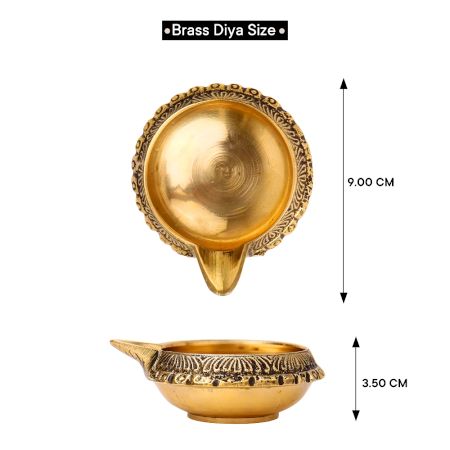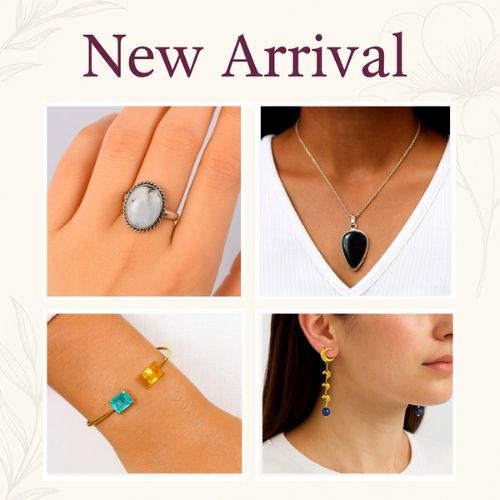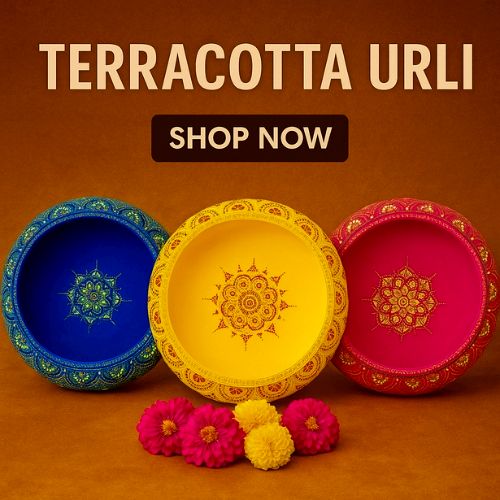-
Washable Terracotta Modern Swan Diya Tealight T-Light Holder - Blue
- ₹ 719.00
-
Only a few left
-
Handmade Washable Terracotta Modern Swan Diya Tealight T-Light Holder - Orange
- ₹ 719.00
-
Only a few left
-
Handicraft Washable Terracotta Modern Swan Diya Tealight T-Light Holder - Red
- ₹ 719.00
-
Only a few left
-
Handicraft Washable Terracotta Modern Turtle Diya Tealight T-Light Holder - Grey
- ₹ 719.00
-
Only a few left
-
Handmade Washable Terracotta Modern Turtle Diya Tealight T-Light Holder - White
- ₹ 719.00
-
Only a few left
-
Washable Terracotta Modern Elephant Diya Tealight T-Light Holder - Grey
- ₹ 719.00
-
Only a few left
-
Handicraft Washable Terracotta Modern Elephant Diya Tealight T-Light Holder - Red
- ₹ 719.00
-
Only a few left
-
Handmade Washable Terracotta Modern Elephant Diya Tealight T-Light Holder - White
- ₹ 719.00
-
Only a few left
-
Handmade Washable Terracotta Modern Fish Diya Tealight T-Light Holder - Red
- ₹ 719.00
-
Only a few left
-
Washable Terracotta Modern Fish Diya Tealight T-Light Holder - Blue
- ₹ 719.00
-
Only a few left
-
Handicraft Washable Terracotta Modern Fish Diya Tealight T-Light Holder - Pink
- ₹ 719.00
-
Only a few left
-
Handmade Washable Terracotta Jali Round Diya Tealight T-Light Candle Holder - Purple ...
- ₹ 599.00
-
Selling fast
-
Terracotta Washable Jali Round Diya Tealight T-Light Candle Holder - Orange - Set of ...
- ₹ 599.00
-
Selling fast
-
Handmade Washable Terracotta Peacock Diya for Festive Home Decor
- ₹ 749.00
-
Only a few left
-
Handicraft Terracotta Washable Double Layer Diya for Home Decor Set of 4
- ₹ 459.00
-
Selling fast
-
Handmade Washable Terracotta Sada Panti Diya for Home Decor Set of 6
- ₹ 359.00
-
Selling fast
-
Hindu Brass Oil Lamp Diya Engraved Floral Swastika Diwali Decoration
-
₹ 380.00
₹ 400.00 -
Selling fast
-
₹ 380.00
-
Brass Dancing Ganesha Statue With Five Diyas In Nickel Finish
-
₹ 2,128.00
₹ 2,240.00 -
Only a few left
-
₹ 2,128.00
-
Brass Peacock Figurine Oil Lamp Diya With a Silver Polish For Diwali
-
₹ 1,377.50
₹ 1,450.00 -
Only a few left
-
₹ 1,377.50
-
Modern Antique Golden Brass 3 Leaf Shaped Oil Lamp For Diwali Pooja
- ₹ 925.00
-
Only a few left
-
Pack of 3 Designer Blue and White Ceramic Diwali Diya For Temple Decoration
- ₹ 249.00
-
Only a few left
Related Searches
Buy Diwali Diya & Different Type of Diyas in India Online
Diwali Diya, or Oil lamps, adorn residences, temples, and public areas, creating a mesmerizing spectacle of light and color, are at the heart of this festival's essence.
Diwali Diyas have a significant cultural and spiritual meaning. Typically made of clay, Brass, Bronze these Diyas stand for the triumph of good over evil and light over darkness. When Diwali Diyas are lit during Diwali, the Goddess Lakshmi, the Hindu deity of wealth and prosperity, is said to enter the home and bestow her blessings. Additionally, it is an expression of gratitude to the Gods for their protection and direction.
A diya has multiple names. Some people are familiar with the terms deya, deeya, dia, divaa, and deepa, while some know them as deepam, deep, deepak, deepam, vilakku, or saki. Ultimately, it is an oil lamp made of clay, mud, or metal with a cotton wick dipped in oil or ghee to light it. These diya or deepam are commonly used in the Indian subcontinent, and they hold sacred and pious significance in Hindu, Sikh, Buddhist, and Jain prayers as well as religious rituals, ceremonies, and festivals, including Diwali festival. Lighting a Diwali Diya is one of the most religious rituals done in a place as the light from the Diwali Diya invites God and Goddess into the space and guide them inside the home to ward off all kind of negativity and bless the area with an immense shower of love, luck, good health and prosperity of the members dwelling in that space.
When we talk about Diwali, it is one of the most auspicious occasions and a festival that is celebrated with grandeur, pomp, and show. Each household has its way of celebrating Diwali with various kinds of traditions and rituals, but this is one festival that brings joy to every family, especially in India. People light Diwali Diya during Diwali and ward off the darkness from their homes. Most tending these days are clay diyas or Mitti diyas. No corner of the house is left in the dark during Diwali. The more we light up our house, the more we invite good and fortunate luck and wishes in our home.
Various kinds of diyas are available on Indianshelf, so let us go through them all to understand the diyas better.
Diwali Diya
A Diwali diya is any diya lit up in a space like a home, office, shop, or any other place, especially to celebrate the festival of lights, which is Diwali. According to Hindu mythology, it is thought that there are 13 diyas that one must light in their house and pray for good health and prosperity during Diwali and Dhanteras. It is also believed that the 13 diyas protect against negative energies and evil spirits. A Diwali diya brings good luck, fortune, happiness, and prosperity in the home, guides Maa Saraswati and Maa Lakshmi into the house, and lets all the Gods and Goddesses know the way around the home through lights so that they can bless the home.
Metal Diyas
As the name signifies, metal diyas are those diyas that are made up of metals like brass(Peetal), bronze(Kasa), copper(Tamba), silver, and gold. The silver and gold diyas are meant to be the most promising because, as we know, these are precious metals. Silver and gold diyas cost is undoubtedly very high compared to brass or copper diyas.
Brass Diwali diyas are affordable and available in intricate, beautiful designs that most people can buy. Especially if we look at the website of IndianShelf, we will be surprised by their exclusive collection of diyas, especially brass diyas.
Brass Diya
Metals like brass are good conductors of positive energy. At the same time, mud is a good reservoir of good spirits. Using brass or Peetal diyas creates a happy and contented aura in the house. According to Hindu religious texts, the Pital ka Diya's material can affect energy flow into a home. Hence, using a Brass Diya is recommended as it helps attract positive, holy, and contended vibes into a home and, simultaneously, ward off negativities from its inhabitants.
Copper Diya
Copper or Tamba diyas are considered auspicious and are often used during puja (worship) ceremonies and other religious rituals. They are usually filled with ghee and oil, and a cotton wick is placed in the center. The Copper diya is then lit to make offerings to the worshipped deity. Brass and Copper are considered auspicious for all occasions. These beautiful handcrafted hammered diyas can burn overnight without oil refill, making them a sustainable option during all celebrations.
Gold Diya
A gold diya is a type of diya or oil lamp made of gold or has a gold plating or coating. Golden diyas are often used for special occasions, such as weddings, festivals, or ceremonies, as they symbolize wealth, prosperity, and auspiciousness. Golden diyas are also considered valuable gifts or souvenirs. Gold diyas come in various shapes, sizes, designs, and patterns. Some Golden Diyas have intricate carvings, engravings, or embellishments. Some Golden Diyas also have other metals, such as silver or copper, mixed with them to create a contrast or a shine.
Bronze Diya
Bronze is an alloy made using a combination of metals with a higher percentage of copper. Bronze has wide use of applications in creating decorative products for interiors. A bronze diya or Kasa Diya is one of the most widely cherished diya or oil lamps used as a light source and a part of the decoration in the interiors of a home. Kasa Diya comes in various designs, shapes, and appeal and is easier to mold into shapes.
Silver Diya
A silver diya is a kind of diya or oil lamp made of silver or brass diya coated with silver. Silver is one of the precious metals that is highly valuable. It is worth a lot and is entirely different than the regular clay or mud diyas that people tend to throw away after one use. It is instead a very expensive diya. It is said that when we light up a silver diya, it attracts more positive energy and vibes and cleanses the aura of the space. Silver Diya is believed to bring good fortune, wealth, and prosperity into the home.
Modern Diya
Modern diyas are the topmost trending diyas. These include battery-operated diyas, electric diyas, LED diyas, solar diyas, ceramic diyas, glass diyas and paper diyas. These diyas create lighting and spread joy without harming the environment. These are pollution-free ways of enjoying the festivals. Safety from fire hazards: These diyas are reliable and safe to use in a kid-friendly or pet-friendly environment.
They are long-lasting and durable. we can change the batteries or let the solar diya light for a long time by being charged through the sun. we can decorate these diyas in various ways. we can use them in our Rangoli designs to create a floating diya look in a traditional Urli or design our way.
Paper Diyas
Paper Diyas are a part of Art and craft. Bronze Oil lamps or diyas created by using paper are known as paper diyas. The creation of paper diya is a kid-friendly activity that can be done and taught to children during Diwali in homes, schools, or kindergartens. we can use these paper diyas to enjoy a pollution-free festival and decorate our homes by pasting them on walls or hanging them by the windows.
Glass Diyas
Glass Diyas or oil lamps or diyas made of glass. These are generally made of Borosilicate glass. The borosilicate glass is resistant to heat and thermal shock. It burns for longer hours, even after repeated usage. Some of these glass diyas come with a handi. They are perfect for Pooja. They are easy to clean and very budget-friendly, as we can use them repeatedly over time by refilling oil.
Electric Diya or LED diya
An electric diya or LED diya is an artificial lamp resembling a traditional oil lamp or diya used for religious and festive purposes in India. Electric diyas are made of plastic, metal, or ceramic and have LED lights that can be switched on and off. Electric diyas are convenient, safe, and eco-friendly alternatives to oil lamps that can create a similar ambiance and aesthetic appeal. Electric diyas come in various shapes, sizes, colors, and designs. Some electric diyas also have features like water sensors, agarbatti holders, or musical sounds.
Ceramic Diya
A ceramic diya is a type of diya or oil lamp made of clay or pottery. Ceramic diyas are often decorated with colorful paints, glazes, or motifs. Ceramic diyas are used for religious and festive occasions in India, especially during Diwali, the festival of lights. Ceramic diyas can create a beautiful and encouraging atmosphere in our home or temple.
Hanging Diyas
Hanging diyas are those diyas that come with a long chain or have a hook to attach a long chain to hang them up in the space. At IndianShelf, we will find beautiful hanging diyas known as Thooku Vilakku. These are brass diyas available in various designs. we can hang these oil lamps through the ceilings in our house's temples, interiors, and exteriors. They are charming and will uplift the ambiance of the place. These oil lamps can have a design made in such a way that we can add multiple cotton wicks to them.
Floating Diyas
Floating diyas look beautiful; we can decorate any corner of our house with them. To create a floating diya, we can take a bowl, add water, and add electric diyas that float in the water. These are battery-operated and are pollution-free.
Another way of creating floating diyas is by using clay or mitti ka diya by placing a pittal bowl in the water, keeping the diya inside it, and allowing it to float in the bowl.
Lakshmi Diyas
Another popular traditional diya is Lakshmi diya. These diyas have the statue of the Goddess Lakshmi on them. These can be made of metal like brass, silver, or gold. These are encouraging and highly valuable. These are precious diyas and are used at the time of some of the most auspicious ceremonies. These can be gifted to people to show blessings from one person to another.
Rangoli Diyas
Rangoli diyas are any diya or oil lamp that is used in the process of making rangoli. Rangoli is a circular design made mainly during Diwali using flower petals or Rang, also known as Rangoli colors. These are created in the shape of a Mandala or a circular shape. we can decorate it with diyas within our rangoli to give it a more eclectic look.
Akhand Jyot
Akhand Jyoti is also an eternal flame, as mentioned in the holy book of mantras and Mantra Mahabodhi. The Akhand diya holds great significance during the festival of Navratri as it symbolizes the continuous and uninterrupted devotion toward the Goddess Durga or Shakti throughout the Nine days. This diya is a pious vessel of light, purity, and protection, inviting blessings into the household and removing negativity.
Paavai Diya
Paavai diyas or oil lamps are standing ladies with diyas in both hands. These diyas are made of brass. These are light during the commencement of any ceremony or any function. This brass Paavai Diya symbolizes that light is the knowledge that is lit to destroy the ignorance called darkness both in life and place.
Tortoise Diya
The tortoise is an animal that represents longevity. A tortoise diya has the power to spread positive energy. Vastu says that Tortoise animals control the energy in an individual’s life. A tortoise is also a luck enhancer, so according to Vaastu, a tortoise, be it in any version, an oil lamp, diya, or a showpiece, will bring peace and luck to our home.
Kubera Diya
A traditional Kuber diya is made of brass. A Kubera diya is lit to maintain and increase the flow of wealth in home and business as it bestows the blessings of Lord Kubera, the God of immense wealth. This provides a constant flow of material and spiritual wealth in a person's life.
Athma Diya
An Athma diya represents the union of both Jeevatma, including body and soul, and Paramatma, which means God and divinity. This diya has been used for a long time by Rishis, Siddhars, Munivars, and various other holy saints. Athma diya can be lit during the early morning, 4 am to 6 am, or after the evening, 6 pm.
Yantra Diya
Yantras are used for worshiping deities in temples or at home, as an aid in meditation, and for the benefits given by their supposed occult powers based on Hindu astrology and tantric texts. They are also used to adorn temple floors due mainly to their aesthetic and symmetric qualities. A yantra diya is an oil lamp lit on the yantra diya plate.
Kalpavriksha Diya
Kalpavriksha is a wish-fulfilling divine tree in Indian religions, such as Hinduism, Jainism, Buddhism, and Sikhism. Its earliest descriptions are mentioned in Sanskrit literature. It is also a popular theme in Jain cosmology and Buddhism. Kalpavriksha diya is a diya attached to the Kalpavriksha plant or tree, which is meant to be one of the most auspicious diya.
Annapakshi Diya
An annapakshi motif is a holy sign distinguishing good from evil. Annapakshi is a majestic and beautiful bird attached to brass diya to curate hanging vilakku or standing oil lamps it will complete an Annapakshi Diya that will light up our house with divinity, bringing joy, happiness, and well-being into our home.
Peacock Diya
As we all know, Peacock is worshipped as a sacred bird in India, and the significance of peacock diya is as such. It holds a high value wherever it is placed. It is one of the most religious diya. Peacock ornamented on a diya makes it almost sacred and holy. It will bring positive vibes to our home, and of course, the embellished and ornamented diya will uplift the home's interiors. We use Peacock Diya/Mayur Diya for inaguration so it is also known as Inaguration Diya.
Elephant Diya
Elephant diya is made of clay, terracotta, or mitti. Like the peacock, the elephant is also known as one of the majestic animals in India. It represents the true heritage and culture of India. In-home decoration, an elephant is widely used by designers and people to symbolize power, integrity, and strength. Elephant diyas, when lit in the home, will bring good luck and wisdom to the residents of the space.
Bird Diya
Artisans from Rajasthan, India, curated the authentic and traditional Brass bird diya. These oil lamps are given a golden vintage look and are made of brass that lasts longer. The bird diya looks beautiful and adds charming vibes to the space's ambiance. Every diya reflects positive light, but a bird diya enhances the area's aura.
Floral Diya
Floral diyas are made of metal like brass, aluminum, and clay or mitti. The maximum time we will spot that the flower used in a diya, especially during Diwali, is a Lotus. The lotus is the national flower of India, is highly mythological, and has religious significance. The story goes that the lotus arose from the navel of God Vishnu, with Brahma sitting at the center of the flower. Some believe that God's hands and feet are lotus-like and his eyes are shaped like lotus petals; his glance and touch are as soft as lotus buds. Lotus diya/Floral Diya is meant to spread purity and calmness in a home.
Lakshmi Narayan Diya
A specially curated hand-made diya by the local artisans of India has created a masterpiece called a Lakshmi Narayan Diya. we can find this masterpiece on the website of IndianShelf, where we will be mesmerized by the beautiful idea that has carvings of Goddess Laksmi and Lord Vishnu, the world's creator. This diya is supposed to have powerful vibes that will increase our spiritual and divine thoughts while blessing we all the same with good luck, fortune, well-being, and prosperity.
Saraswati Diya
The Goddess Saraswati is often depicted as a beautiful woman dressed in pure white, usually seated on a white lotus, symbolizing light, knowledge, and truth. Sarswati diyas are oil lamps with an idol of Saraswati Maa on the oil lamp. Goddess Saraswati is known for wisdom, education, intellect, and speech. Lighting a Saraswati diya during Navratri and Diwali is meant to be shubh, which means utmost luck and purity.
Hanuman Diya
A Lord Hanuman oil lamp is made of either metal or clay. An oil lamp or diya, which has the sculpture of Lord Hanuman, is known as a Hanuman diya. A Hanuman diya is a very sacred diya meant to be cherished forever by the devotees. These can be used regularly and are highly durable if we maintain them properly. They are easy to clean, and we can re-fill the oil in the diya to use it repeatedly.
Krishna Diya
Krishna diya can mean two things: a diya lit for Lord Krishna is a Krishna diya. On the other hand, a diya that has the idol of Lord Krishna attached to it is a Krishna oil lamp. These are generally made as hanging oil lamps and look magnificent when hung up in mandirs or homes.
Rama Diya
A Rama diya is a clay lamp or a mitti diya lit during the Diwali Hindu festival. It is named after the Hindu God Rama, who used a diya to light his way home from exile. Rama diyas are typically made of red or orange clay and have a spout for the wick. They are often decorated with images of Rama, Sita, and Lakshmana, the other two main characters in the Ramayana. Rama diyas are lit to symbolize the triumph of good over evil, light over darkness, and knowledge over ignorance. They are also believed to bring good luck and prosperity.
Shiva Diya
A Shiva diya is a type of diya or oil lamp used to worship Lord Shiva, the supreme deity in Hinduism. A Shiva diya is usually made of brass, copper, or clay and has a trident-shaped stand that represents the weapon of Lord Shiva. A Shiva diya is also decorated with symbols and motifs associated with Lord Shiva, such as the snake, the crescent moon, the third eye, the drum, or the lingam. A Shiva diya offers Lord Shiva light, oil, and incense, especially during festivals such as Maha Shivaratri, Shravan Maas, or Pradosh Vrat. It is also used to perform aarti, a ritual of waving the diya in front of the deity while singing hymns or prayers. It is believed to bring blessings, protection, and prosperity from Lord Shiva.
It is a beautiful and sacred item that can enhance our devotion and spirituality.
Ganesha Diya
A Ganesha diya is a type of diya or oil lamp used to worship Lord Ganesha. Lord Ganesha is one of the most loved elephant-headed Gods in Hinduism. A Ganesha diya is usually made of brass, copper, or clay and has a figurine or a carving of Lord Ganesha on the stand or the rim. A Ganesha diya is also decorated with symbols and motifs associated with Lord Ganesha, such as the modak, the mouse, the lotus, or the swastika. A Ganesha diya offers Lord Ganesha light, oil, and incense, especially during festivals such as Ganesh Chaturthi, Sankashti Chaturthi, or Vinayaka Chavithi.
Meditation Diya
A meditation diya is a type of diya or oil lamp that is used during the practice of meditation. Candle gazing meditation, candlelight meditation, flame meditation, or ‘Trataka Sadhana’ is a kind of meditation done in a dark place by lighting a diya. When we practice candle gazing meditation, we’re looking at or focusing on one object only. This attention can help we improve our focus and clear our mind. There are many mental and physical benefits of candle gazing meditation. With a proper candle meditation, we will decrease our anxiety by focusing on a positive outlook in life.
Terracotta Diya
Terracotta is reddish-brown clay that has been baked but not covered in a shiny transparent substance (glaze) and is used for making pots, ornaments, etc. It is an earthen or unglazed clay product. So, a terracotta diya is a mitti diya or an oil lamp made of mitti without a shiny coating. If we love to paint, we can always look forward to painting our terracotta diyas and making our Diwali fun by adding colorful diyas to our home.
Ghee Diya
A diya lit by adding ghee into the diya or oil lamp is known as a Ghee diya. Other than Gee, we can add other oils into the diya to light it up, like mustard oil or sarson ka tel Castor oil, coconut oil, Pancha Deepa oil, and more, but Ghee is one of the purest forms of oil that is believed sacred and holy, which is why maximum times for Sukh and Shanti means happiness and calmness around the house people light up diyas with ghee only.
Samai Diya or Samay Diya
Samai Diya is a unique vermicelli oil diya usually made of brass and finished with a smooth surface. This vintage diya is an excellent gift for a family that likes magical artistic things. This diya can be a decorative focal point at home, in the office, or in any other space. Moreover, this oil diya can be used during celebrations, functions, or festivals.
The design of Samay diya is highly intricate and traditional, with a soft lighting effect, making them suitable for any home or office. Additional ways of using Samai diya is by placing them at the entrance of hospitality, hotels, etc.
Chambu Diya
Chambu diya is a type of diya which have a mystic aura over the spaces we arrange. This diya is perfect for creating a meditative and calming atmosphere and ambiance.
This type of diya is usually made up of glass and comes with a glass tube where a candle is placed. The orifice or opening in this type of diya is provided to put the tube.
Overall, we can place this diya to create a calming vibe in areas like house galleries or living rooms.
Lemon Diya
Lemon diya, elumachai vilakku, or Lemon rind diya are used to worship Maa Durga. As the name suggests, lemon diya is made from lemon peel, adjusted, and molded to give a form of diya.
In the center of the molded diya, usually, cotton Batti is placed and lit to carry the procession of worshiping. Overall, this diya is considered pious in southern states of India.
Laman Diya
Laman diya is a hanging diya made from glass with a base for supporting the overall structure of the diya. From the base, a cylindrical tube originates in a straight line, bending at the topmost part, where there is another tube running downward whose base has a diya.
Overall, this type of diya has unique features, giving spaces a distinctive view and visual appeal.
Overall, these small, oil-filled lamps are more than just symbols; they create an atmosphere of warmth, joy, and togetherness. Families gather to light diyas, share stories, and offer prayers. In addition to illuminating actual spaces, the soft, flickering glow of the diyas also promotes inner calm and spiritual awakening.
Brass, glass, and even eco-friendly options have been incorporated into the design of Diwali diyas in recent years, along with other materials and styles. This evolution illustrates how customs can change while preserving the festival's core values.
The centerpiece of the Diwali celebration has always been the Diwali diya, which constantly reminds us of the power of light and the victory of good over evil in our daily lives. In addition to illuminating our homes, lighting these lamps ignites the steadfast flame of optimism and hope that burns within us.
What are Diwali Diyas, and why are they essential for Diwali celebrations?
Diwali Diyas are traditional oil lamps used during the festival, symbolizing the victory of light over darkness. Lighting these Diyas is a crucial ritual during Diwali, as it is believed to bring prosperity, happiness, and positive energy to homes. Diyas are placed in temples, houses, and outdoors to honor Goddess Lakshmi and celebrate the triumph of good over evil.
What types of Diwali Diyas are available?
There are several types of Diwali Diyas available to suit different styles and purposes:
Designer Golden Metal Diyas
These are elegant and ideal for Mandir or Pooja Room Decoration.
Handmade Diwali Diyas
These unique Diyas, such as the Handmade Golden Metal Ganpati on Leaf Shape Diya, are crafted using traditional methods and combine artistry with spirituality.
Brass Oil Lamps
These Diyas, like the Brass Lotus Flower Oil Diya and brass dancing Ganesha Five-Wick Oil Lamp, offer both luxury and spiritual significance.
Swastika and Flower-Shaped Diyas
For a more contemporary look, diyas like the golden metal swastika oil diya or open flower-shaped metal golden diwali diya are great choices.
Pack of 3 Diyas
Perfect for coordinated home or temple decor, sets like the Handmade Brass Leaf-Shaped Diwali Diyas and Brass Lotus-shaped Diwali Diyas are popular options.
What is the price range for Diwali Diyas?
The price range for Diwali Diyas varies based on the material, design, and size. Here’s a general guide:
Affordable Range
Starting as low as ₹30 for simpler designs like the Golden Metal Swastika Oil Diya.
Mid-Range
Diyas priced between ₹100 to ₹500, such as the Golden Brass Flower Shaped 5 Wick Oil Lamp or Handmade Golden Metal Diwali Diya for Pooja Room Decoration.
Premium Range
For those seeking high-end, intricately crafted designs, prices range from ₹500 to ₹1,500. Examples include the Brass Dancing Ganesha Five Wick Oil Lamp and Brass Lotus Flower Oil Diya Lamp.
How can I choose the right Diwali Diya for my home or temple?
The choice of Diya depends on your home’s decor and the space where it will be placed:
For a traditional touch, opt for Diyas like the handmade golden metal Ganpati on Leaf Shape Diya or the Brass Dancing Ganesha Five-Wick Oil Lamp.
Consider contemporary designs such as the Modern Golden Brass Lotus Flower Diwali Diya Lamp or the Modern Antique Golden Brass 3 Leaf Shaped Oil Lamp for a modern aesthetic.
Multi-wick lamps like the Golden Brass 6 Wick Oil Lamp with Wooden Handle or Brass Flower Engraved Diwali Diya create a dramatic, illuminated effect for larger spaces or temples.
For smaller spaces, the Golden Metal Laxmi Ganesh Diwali Oil Diya Lamp or Decorative Golden Brass Oil Lamp with Turtle Base offers a subtle yet elegant addition to the decor.
Do these Diyas come in sets or packs?
Many Diyas are available in packs, allowing for coordinated and uniform decoration across your home or temple. Some popular options include:
Handmade Brass Leaf-Shaped Diwali Diyas (Pack of 3)
Brass Lotus Shape Diwali Diyas with Handle (Pack of 3)
Brass Bird Puja Wick Diwali Deepam Diyas (Pack of 3)
These sets are ideal for creating a cohesive look and can serve as thoughtful gifts during Diwali.
Are the materials used for these Diyas durable?
Yes, the above-mentioned Diyas are made from quality materials such as brass, bronze, and metal. The materials used in these products are designed to endure heat from oil and wicks, hence making them safe for use and durable. These Diyas may be required during festivals or in any pooja ceremony, and both in terms of quality and appearance, you can be sure of these Diyas.
Can these Diyas be used for small pooja ceremonies?
Absolutely. Most Diyas are not restricted to Diwali celebrations but are created for pooja practices yearly. For example, the Golden Metal Swastika Oil Diya or the Handmade Golden Metal Diwali Diya for Pooja Room Decoration is appropriate for daily pooja. They are durable and resistant enough that their quality craft work enables them to withstand wear and tear and maintain their utility and visual appeal throughout the year.
What have I discovered as the unique features of the Brass Dancing Ganesha Five Wick Oil Lamp?
The Brass Dancing Ganesha Five Wick Oil Lamp is a beautiful product that includes the dancing statue of Lord Ganesha coupled with the oil lamp having five wicks. It is an ideal representation of something that has been eliminated and is an excellent artifact to be placed at the center of any pooja room or Diwali festival, meaning and beautification.
Is there any Diwali Diyas on sale or any promotion this Diwali festival?
Yes, the majority of Diyas are festive items, and most of them are offered cheaper during this period. For instance, the Brass Lotus Flower Oil Diya Lamp may be offered with 5 percent off. Shopping for Diwali Diyas is something one should always check for special offers, perhaps for only a limited amount of time.
Can I gift these Diyas to friends or family for Diwali?
Diwali Diyas, make thoughtful and meaningful gifts for friends and family. Items like the Brass Ganpati, Leaf Shape Diwali Diya Pack of 3, or Golden Brass Flower Shape Lamp Diya are excellent gift options. These Diyas serve not only as functional pieces for lighting but also as lasting home decor that will be appreciated throughout the year.
Where can I buy Diwali Diyas?
Diwali Diyas are widely available online through various marketplaces. A diverse collection of Diyas, from traditional brass oil lamps to modern designer pieces, makes it easy to find the perfect Diya for any occasion. A reputable online store specializing in handcrafted and designer home decor offers many options, ensuring high-quality and authentic products.
How should I maintain and clean these Diyas?
Maintaining Diwali Diyas is simple. After each use, clean them gently with a soft cloth and mild soap solution to remove any oil residue or soot. For brass and metal Diyas, polishing with a brass cleaner will help maintain their shine. To ensure longevity, store the Diyas in a dry place to prevent tarnishing, and always handle them carefully to avoid damage.
What Emotions Or Themes Do Diyas Commonly Portray?
Diyas evoke a spectrum of emotions, from spiritual calm to communal joy. They signify enlightenment, prosperity, and protection against negativity, creating a meditative ambience. Lighting a Diya during Diwali is an act of hope, a subtle invocation of blessings, and a gesture of togetherness. Homes gleam with soft radiance, nurturing warmth, reverence, and festive cheer. Symbolically, they reflect human aspiration, overcoming darkness with light. The ritual is both visual and emotional, touching senses and spirit alike. Each flame tells a story, whether personal or collective, blending heritage, devotion, and cultural celebration into one luminous moment.
What Are The Most Recognized Styles In Diyas, Traditional, Decorative, Modern?
Diyas reveal the artistry and values of their makers. Traditional clay Diyas, modest and unpainted, speak of simplicity and devotion. Decorative metal or brass Diyas, often engraved with intricate motifs, highlight craftsmanship and ceremonial elegance. Modern glass or ceramic Diyas employ vibrant colors, contemporary patterns, and enamel work, bridging tradition with home decor trends. Each style is both functional and expressive, allowing users to align with personal taste, cultural identity, or the festival’s mood. From rustic earthy warmth to polished festive sophistication, Diyas carry cultural heritage, artistic expression, and a quiet narrative that transcends generations.
Why Are Diyas Still Revered In Contemporary Festivals?
Diyas persist not only because of tradition but for their timeless symbolism. They create warmth, ambiance, and a sense of sacredness in modern homes. Even with electric lights and candles, the Diya’s soft, flickering flame is irreplaceable. It represents hope, devotion, and communal harmony, making rituals tangible. Contemporary designs allow them to complement modern interiors while maintaining spiritual depth. Their visual charm and symbolic weight make them ideal for both festive and everyday reflection. In essence, Diyas are living artifacts, connecting the present to centuries of culture, spirituality, and aesthetic beauty.
Techniques, Materials & Artistic Tools for Diyas
How Are Diyas Traditionally Created?
Crafting Diyas is a delicate blend of skill, patience, and ritual. Clay Diyas are shaped by hand or using molds, then sun-dried and kiln-fired to ensure durability. Metal Diyas undergo casting, engraving, and etching, each step a testament to artisan mastery. Decorative enhancements, painting, embossing, or gilding, fuse aesthetics with symbolic expression. Every curve, groove, and stroke is intentional, reflecting tradition and cultural storytelling. Historically, these techniques were passed through generations, embedding local identity and craftsmanship into each piece. The process transforms simple materials into luminous objects, carrying both functional purpose and profound spiritual significance.
What Materials Are Commonly Used In Diyas?
Materials determine a Diya’s aesthetic and functional character. Clay offers organic simplicity, emitting soft, warm light. Brass and bronze provide resilience and elegance, often engraved with sacred motifs. Silver Diyas convey opulence and refinement, suitable for formal rituals. Glass and ceramic Diyas invite colorful designs and enameled finishes, reflecting contemporary tastes. The choice of material influences durability, light quality, and cultural resonance. Historically, material choice was dictated by ritual context, regional availability, and symbolic value. Each Diya, whether humble or ornate, communicates intention, cultural heritage, and the artisan’s expertise while enhancing the spiritual atmosphere.
What Role Do Design Elements Play In Diyas?
Design transforms a Diya from utility to art. Shape, symmetry, and proportion affect how light radiates, creating ambiance. Carvings, painted motifs, and embossing convey cultural narratives, lotus flowers signify purity, peacocks represent beauty, and geometric patterns reflect cosmic order. Intricate detailing elevates aesthetic appeal while connecting ritual to storytelling. Size and depth influence oil capacity and flame stability, merging function with artistry. The interplay of light and shadow adds depth, mood, and rhythm to festive spaces. Essentially, design elements are both symbolic and practical, shaping the visual, emotional, and cultural impact of every Diya.
Artistic Intent and Symbolism of Diyas
What Stories Or Messages Do Diyas Aim To Convey?
A Diya narrates universal themes: light conquering darkness, knowledge surpassing ignorance, and hope prevailing over despair. Its flame embodies prayers, blessings, and well-wishes, offering spiritual guidance. During Diwali, Diyas become storytellers, marking the victory of good over evil, invoking prosperity, and fostering collective joy. In homes, they create rituals of reflection, gratitude, and mindfulness. Their placement, at thresholds, windows, or altars, communicates protection, auspiciousness, and reverence. Beyond festivals, Diyas evoke personal meditation and inner calm. Each flame is a living metaphor, blending culture, emotion, and art, quietly transmitting generations of wisdom and spiritual intention through light.
How Do Diyas Express Cultural Or Spiritual Symbols?
Diyas integrate motifs, materials, and rituals to express cultural identity. Lotus carvings signify purity, peacock designs evoke grace, and religious emblems highlight devotion. Every choice, shape, color, engraving, reflects spiritual and cultural narratives. In temples, homes, and ceremonies, Diyas bridge earthly and divine realms, making rituals tangible. They serve as visual prayers, connecting families to ancestral heritage and philosophical teachings. Through artistic intent, each Diya communicates belonging, reverence, and continuity. The subtle interplay of material, motif, and flame transforms a simple lamp into a cultural artifact, enriching celebrations and personal rituals with layered symbolism and spiritual resonance.
How Do Light, Flame, And Material Choices Influence Mood?
The Diya’s flame shapes perception and emotion. Clay emits soft, intimate light; brass and silver reflect radiance elegantly, adding grandeur. Colorful glass Diyas enhance festive vibrancy, creating energy and warmth. Placement and number amplify serenity, focus, or celebration. The interplay of material and flame subtly affects ambience, gentle flickers induce reflection, ornate lamps inspire awe, and vibrant designs invite joy. Light interacts with surroundings, casting shadows that animate space and ritual. Material choices, flame size, and design converge to create mood, balancing aesthetics with spiritual intent. A Diya’s light is both practical and poetic, setting tone, emotion, and sacred presence.
Purchase, Collection & Investment of Diyas
Diyas are more than lamps; they are symbols of light, warmth, and cultural continuity. Collectors and decorators alike seek pieces that balance aesthetics, craftsmanship, and heritage. When considering Diyas for purchase or investment, one should note material quality, artistry, and historical significance. Handmade clay or brass Diyas carry stories of artisans and centuries-old techniques. Decorative variations, often vibrant or minimalistic, appeal to contemporary homes while retaining cultural resonance. Collectors value uniqueness, subtle imperfections, and cultural authenticity. Investing in Diyas merges spiritual ambiance with artistic preservation, creating heirlooms that enhance festivals, décor, or curated collections while celebrating Indian craft traditions.
Where Can You Buy Authentic Or Decorative Diyas?
Local markets, craft fairs, and specialty stores remain reliable sources for authentic Diyas. Artisans often display intricate clay, brass, or terracotta designs, each reflecting regional culture. Online marketplaces have widened access, offering decorative Diyas ranging from minimalist glass pieces to ornate painted lamps. Authenticity matters: handmade Diyas may show minor asymmetries or tool marks, signaling craftsmanship, unlike mass-produced replicas. Price, material, and design are indicators, higher-quality metals and hand-painted finishes often command premium rates. Visiting craft hubs or artisan workshops can provide firsthand insight into traditional techniques, enhancing appreciation for cultural heritage. Convenience, variety, and artisan connection make sourcing Diyas a curated, rewarding experience.
How Can You Verify The Authenticity Of Handmade Diyas?
Handmade Diyas carry nuances that factory replicas lack. Look for fine tool marks, slight asymmetries, or subtle texture variations, proof of hands-on crafting. Materials reveal authenticity: unglazed clay, solid brass, or traditional terracotta suggest artisanal origin. Check finishing details, hand-painted patterns often display minor inconsistencies. Smell and weight can indicate natural clay versus synthetic molds. Engaging with sellers about sourcing and artisans’ techniques adds verification. Authentic Diyas often come from regions renowned for specific styles, like Rajasthan’s painted clay or South Indian brass lamps. Documentation, artisan signatures, or provenance history strengthens credibility, making each Diya both a cultural artifact and a collectible.
What Makes A Diya A Worthwhile Decorative Or Collectible Item?
A Diya’s value extends beyond visual appeal, it intertwines craftsmanship, cultural resonance, and material quality. Hand-molded clay, polished brass, or intricate embellishments enhance collectibility. Artistic detailing, from embossed patterns to hand-painted motifs, reflects skill and regional identity. Cultural relevance elevates significance, festival-specific designs, ritual-use pieces, or heritage styles maintain spiritual and decorative importance. Rarity increases worth, limited editions or regional specialties appeal to collectors seeking meaningful additions. Decorative Diyas can serve functional lighting, mood enhancement, or ceremonial roles. Investing in such pieces ensures a blend of tradition, artistry, and enduring beauty, making them heirlooms cherished across generations.
Care, Storage & Maintenance of Diyas
Proper care preserves Diyas’ aesthetic and spiritual essence. Material dictates maintenance, clay requires dry, dust-free storage, while metal benefits from gentle polishing to prevent tarnish. Placement matters, neutral surfaces, wooden trays, or brass plates complement design while preventing scratches or damage. Old or heirloom Diyas can be restored thoughtfully, retaining patina and charm. Avoid excessive handling, harsh chemicals, or water exposure. Awareness of potential damages like cracks, chips, or discoloration helps prolong lifespan. Thoughtful storage and care transform Diyas into enduring décor elements, blending functionality, cultural reverence, and visual appeal in homes and ceremonial spaces alike.
How Do You Properly Store And Maintain Diyas?
Storage protects Diyas from environmental and accidental damage. Clay Diyas demand dryness, moisture causes cracks or mold. Wrap individually in soft cloth or tissue paper, and store in sturdy boxes. Metal Diyas require polishing with non-abrasive cloths or mild metal cleaners to prevent tarnishing. Keep both types in a dust-free, cool area away from direct sunlight. Frequent inspection ensures chipped paint, broken embellishments, or surface cracks are identified early. For long-term collection, display cases with gentle lighting preserve visual appeal. Proper care ensures longevity, allowing Diyas to retain decorative and spiritual significance while enhancing living spaces with festive warmth.
What Materials Best Complement The Diya Aesthetic?
Diyas shine on surfaces that highlight their textures and hues. Wooden trays or brass plates provide natural contrast and elevate visual presence. Rangoli patterns or floral arrangements accentuate festive appeal. Neutral-toned tables, shelves, or altar setups allow the Diya’s light and design to dominate the ambience. For minimalist interiors, glass coasters or simple metallic bases provide subtle elegance. Combining textiles, like embroidered cloths or silk runners, with clustered arrangements enhances depth. Material choices interplay with flame glow, creating layered moods. Strategic placement amplifies both aesthetic and spiritual resonance, making the Diya an anchor of cultural, decorative, and emotive expression.
Can Old Diyas Be Restored Without Losing Original Charm?
Restoration preserves the essence of antique or well-used Diyas while enhancing longevity. Clay lamps benefit from gentle dusting, avoid water-based scrubbing that may erode detailing. Metal Diyas can be polished softly to revive shine but retain natural patina for authenticity. Minor paint chips or faded embellishments can be touched up with careful color matching. Avoid aggressive chemicals or mechanical restoration that compromises structural integrity. Restoration should respect heritage and artisanal nuances, enhancing visual appeal without erasing age marks. Thoughtful maintenance transforms old Diyas into treasured décor, preserving history, ritual significance, and collectible charm for future generations.
What Are Common Damages Diyas Suffer Over Time?
Diyas endure wear from handling, environmental exposure, and storage. Clay Diyas crack or chip due to moisture, impact, or uneven firing. Metal Diyas tarnish, dull, or accumulate residues. Painted designs fade, peel, or scratch with improper cleaning. Embellishments like beads, mirrors, or filigree may loosen. Candle soot or wax residue affects finish and aesthetics. Regular inspection mitigates these risks, avoid stacking fragile Diyas, use protective padding, and place on stable surfaces. Awareness and preventive care maintain both functionality and décor integrity. Understanding vulnerabilities allows collectors to proactively safeguard Diyas, ensuring enduring beauty and usability across seasons and celebrations.
Home Decor, Styling & Mood Setting With Diyas
Diyas are versatile elements that influence both ambiance and cultural storytelling in interiors. Their soft glow and intricate designs evoke serenity, warmth, and festivity. Placement choices, living room clusters, hallway arrangements, or altar setups, define mood. Materials, colors, and motifs harmonize with traditional, ethnic, or modern interiors, while strategic groupings add depth. Diya lighting complements textures, fabrics, and architectural features. Beyond decoration, they establish emotional resonance, bridging heritage and contemporary living. Incorporating Diyas is not only aesthetic but experiential, transforming spaces into welcoming environments infused with spiritual and cultural undertones.
How Can Diyas Influence A Room’s Ambience Or Tone?
Diyas modulate light and energy in interiors. Their soft, flickering glow introduces warmth, serenity, and reflective calm. Grouped in clusters, they create intimacy and cozy corners, singular statement Diyas become focal points. Placement near mirrors or metallic surfaces amplifies glow, enhancing room brightness without harsh lighting. In festive settings, Diyas convey celebration and spiritual connection, evoking cultural memory and nostalgia. Material choice affects tone, brass and gold reflect opulence, clay and terracotta impart earthy, grounded warmth. Thoughtful arrangement transforms mundane spaces into ambient sanctuaries, merging decorative appeal with emotional resonance, making each room both welcoming and culturally expressive.
What Interior Styles Pair Well With Diyas?
Diyas adapt to diverse interior styles. Traditional and ethnic interiors flourish with brass, gold, or painted clay designs. Eclectic setups benefit from mixed materials, sizes, and regional motifs. Modern or minimalist interiors welcome subtle clay or glass Diyas to introduce warmth and visual contrast. Rustic, bohemian, or fusion styles thrive with terracotta clusters paired with natural textiles or wood accents. Placement on mantels, shelves, or side tables creates curated focal points. The versatility of Diyas ensures they complement both heritage and contemporary aesthetics, enhancing visual storytelling, cultural richness, and ambient harmony in a variety of interior settings.
How Do You Choose The Right Diya For A Living Room, Hallway, Or Puja Space?
Choosing a Diya requires balancing size, flame intensity, material, and design with space purpose. Large decorative Diyas suit living rooms as focal décor, offering both illumination and visual gravitas. Smaller clay or glass Diyas enhance hallways, tables, or niche spaces without overcrowding. Puja areas favor traditional materials and motifs, preserving ritual integrity. Clustering multiple Diyas creates festive impact, while single statement pieces establish elegance. Color, finish, and surface compatibility ensure aesthetic coherence. Selecting the right Diya harmonizes spatial function, light ambiance, and cultural symbolism, transforming ordinary areas into evocative, spiritually enriched environments.
Cultural Impact & Historical Legacy of Diyas
Diyas are vessels of history, spirituality, and artistry. Their presence spans rituals, festivals, and daily practices, carrying symbolic light into homes and hearts. Across Indian regions, materials and designs vary, South Indian brass, Rajasthani painted clay, West Bengali terracotta, reflecting local culture. Generational artisans preserve techniques, embedding heritage into functional art. Diyas embody the continuity of craftsmanship, festive ritual, and aesthetic appreciation. They link past and present, turning light into story, décor, and spiritual tool. Collectors and cultural enthusiasts recognize their dual role, practical illumination and living testament to centuries of artistry, belief, and regional identity.
What Is The Historical Significance Of Diyas Across Civilizations?
Diyas have illuminated Indian homes and temples for centuries, symbolizing light over darkness, knowledge over ignorance, and spiritual awakening. Ancient texts reference oil lamps in rituals, festivals, and everyday worship. Beyond utility, Diyas serve as cultural markers, representing continuity of heritage and aesthetic expression. Festivals like Diwali elevate their prominence, while daily household use reinforces routine sanctity. Across civilizations, variations appeared, clay, metal, or stone, each reflecting regional availability and cultural preferences. The historical significance extends to art and craft, as artisans developed intricate designs and motifs. Diyas thus bridge function, ritual, and cultural storytelling, anchoring identity across time.
How Did Different Regions Contribute To The World Of Diyas?
India’s diverse regions cultivated distinct Diya traditions. South India favors polished brass lamps with elongated stems and ornate motifs. Rajasthan is renowned for colorful painted clay Diyas with floral and geometric designs. West Bengal excels in terracotta artistry, often embellished with intricate relief work. Each region’s materials, climate, and cultural practices influenced form and decoration. Artisans incorporated local myths, festivals, and symbols into designs, giving each Diya a story. Regional variations not only celebrate local identity but inspire modern decorative trends. Collectors appreciate these nuances, valuing both historical lineage and contemporary aesthetic reinterpretation in interior décor, ceremonies, and curated collections.
Which Artisans Or Traditions Shaped The Evolution Of Diyas?
Generations of artisans preserved Diya-making through hands-on training, oral storytelling, and ritual knowledge. Clay molding, brass casting, painting, and embellishment skills evolved regionally, influenced by religious and cultural narratives. Guilds and family workshops ensured continuity, embedding craftsmanship into identity. Innovations blended utility with aesthetics, multi-tiered brass lamps for temples, painted clay for festivals, terracotta for decorative use. These traditions inspired collectors, decorators, and cultural historians, elevating Diyas from functional objects to artistic treasures. Contemporary artisans honor heritage while experimenting with new materials, colors, and forms, sustaining relevance in modern décor while preserving historical craftsmanship and regional artistic identity.
Diyas vs Other Decorative Lighting Forms
Diyas carry layers of meaning beyond illumination. Each flame is symbolic, a representation of knowledge, purity, and spiritual light. Handmade detailing in clay or brass creates textures that electric lamps cannot replicate, offering a warm, intimate glow. Electric lamps focus on efficiency, brightness, and convenience. They dominate modern interiors because they require minimal effort. Diyas, however, demand care, reflecting patience and reverence. Lighting a Diya is a ritual, a mindful act connecting the present moment with centuries-old traditions. Modern lamps illuminate spaces, Diyas illuminate hearts and cultural consciousness.
What Sets Diyas Apart From LED Or Digital Lighting?
LEDs and digital lights deliver precision, programmable colors, intensity, and energy efficiency. They excel in practical settings. Diyas, in contrast, evoke emotion. Their flickering flame, warm amber glow, and tactile engagement with oil and wick create an intimate, almost meditative experience. During festivals like Diwali, the physical act of lighting Diyas, arranging them in patterns, watching shadows dance across walls, imbues spaces with cultural resonance. LED lights cannot replicate this sensory depth. Diyas are bridges between the tangible and the spiritual, connecting individuals to shared heritage while offering visual serenity and a symbolic embrace of positivity.
How Do Clay Or Brass Diyas Differ From Glass Or Ceramic Versions?
Clay Diyas offer humility and an earthy charm, absorbing oil and giving a gentle, natural glow. Brass Diyas exude elegance, their reflective surfaces amplify light and add ceremonial grandeur. Glass or ceramic Diyas focus on aesthetic vibrancy, showcasing colors and designs that animate modern interiors. Each material shapes atmosphere differently. A clay Diya may evoke rustic warmth during intimate family rituals. Brass Diya reflects a golden shimmer, perfect for ornate pujas or festive displays. Glass or ceramic versions invite playful creativity, fitting contemporary decor without losing traditional essence. The choice of material shapes both experience and expression.
Emotional & Symbolic Value of Diyas
Gifting Diyas communicates more than decoration, it conveys thoughtfulness, cultural respect, and emotional warmth. A handcrafted brass Diya may signify elegance and longevity, while a clay Diya expresses simplicity and groundedness. During festivals, gifting Diyas celebrates light over darkness, positivity over adversity. They act as tangible symbols of hope, heritage, and spirituality. Unlike materialistic presents, Diyas carry narrative value, they tell a story, invite mindfulness, and encourage participation in traditions. Giving a Diya is both aesthetic and symbolic, a gesture of connection, reflection, and cultural continuity.
What Emotional Value Do Inherited Or Family Diyas Hold?
Inherited Diyas are vessels of memory. Each scratch or patina carries stories of past celebrations, shared rituals, and familial bonds. Lighting them evokes nostalgia and reverence, linking present festivities with ancestors’ hands and intentions. These Diyas preserve cultural continuity, reminding one of lineage, values, and seasonal rhythms. They act as anchors, allowing families to pass heritage tangibly from one generation to another. Beyond physical light, inherited Diyas illuminate memory, emotions, and identity. They are intimate artifacts, celebrating lineage while participating in living traditions, bridging past and present through ritual and reflection.
Why Do People Feel A Deep Connection To Diyas From Past Traditions?
Diyas connect individuals to culture, spirituality, and sensory experience simultaneously. The act of lighting a wick immersed in oil mirrors ancient practices, maintaining continuity with ancestral rituals. The flicker of flame evokes nostalgia, warmth, and mindfulness. People associate Diyas with family gatherings, festival preparation, and shared stories. Beyond aesthetic appeal, Diyas symbolize hope, knowledge, and the triumph of light over darkness. This emotional resonance is heightened by tactile interaction, the cool weight of brass, the rough texture of clay, the gentle tilt of flame. Diyas embody living tradition, offering both visual and spiritual fulfillment.
Frequently Asked Questions (FAQs)
What Defines A Diya?
A Diya is a traditional lamp, usually made of clay, metal, or glass, holding oil or ghee with a cotton wick. It is primarily used during religious or festive occasions, symbolizing light, purity, and spiritual awareness. The Diya’s flame is not merely functional, it represents knowledge overcoming ignorance, positivity overcoming darkness, and ritual mindfulness over mundane routine.
Can Diyas Be Recreated Authentically Today?
Yes. Artisans continue using centuries-old techniques to craft Diyas that maintain cultural authenticity. Traditional clay molding, brass casting, and hand-painting preserve historic patterns and symbolism. Modern artisans blend innovation with tradition, ensuring designs fit contemporary spaces while keeping rituals intact. These handcrafted Diyas serve both functional and aesthetic purposes, honoring heritage while appealing to modern sensibilities.
How Do You Protect Diyas From Damage?
Clay Diyas should be stored away from moisture to prevent crumbling. Metal Diyas require polishing to avoid tarnishing. Glass or ceramic Diyas demand careful handling to prevent cracks or chips. Avoid stacking fragile Diyas without padding. When displaying, place them on stable, heat-resistant surfaces. Proper care ensures longevity, allowing Diyas to serve generations.
Are Diyas Still Relevant In Modern Interiors And Festivals?
Absolutely. Diyas integrate cultural symbolism, spiritual significance, and aesthetic appeal into contemporary settings. They enhance festive decorations, create ambient lighting, and add heritage value to modern homes. Even in urban apartments, a row of small Diyas or decorative brass lamps transforms space, bridging tradition with modern design, and ensuring rituals remain visually and emotionally resonant.
Can Traditional Diya Designs Inspire Contemporary Decor?
Yes. Designers draw from traditional shapes, motifs, and materials to create modern adaptations. Minimalist brass Diyas, geometric clay lamps, and vibrant glass designs blend heritage with contemporary aesthetics. These reinterpretations allow homes to celebrate culture subtly while fitting modern interiors. Traditional Diya artistry offers endless inspiration for innovative, culturally anchored decor.
